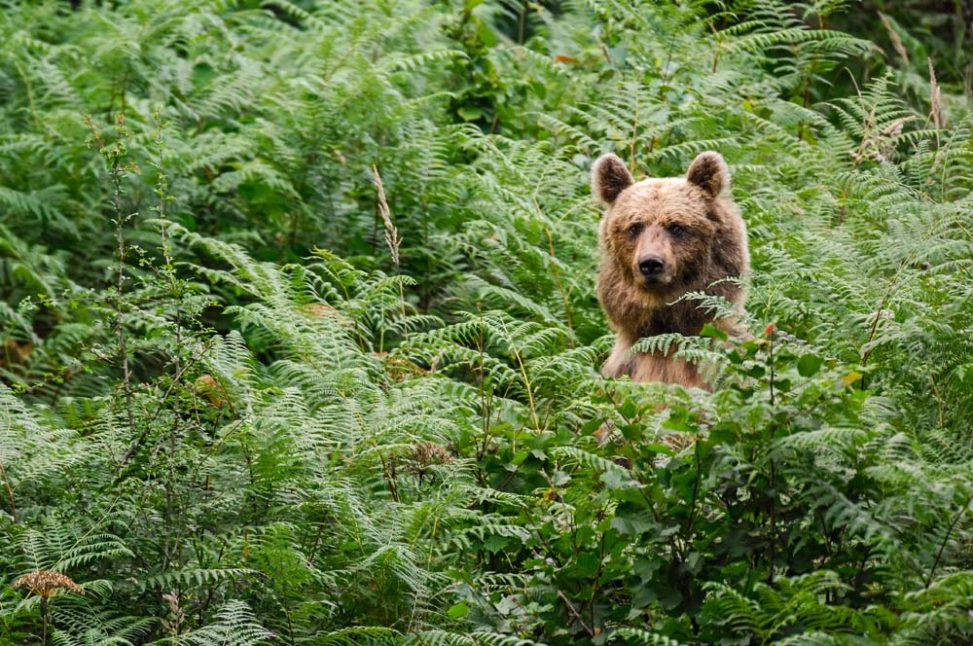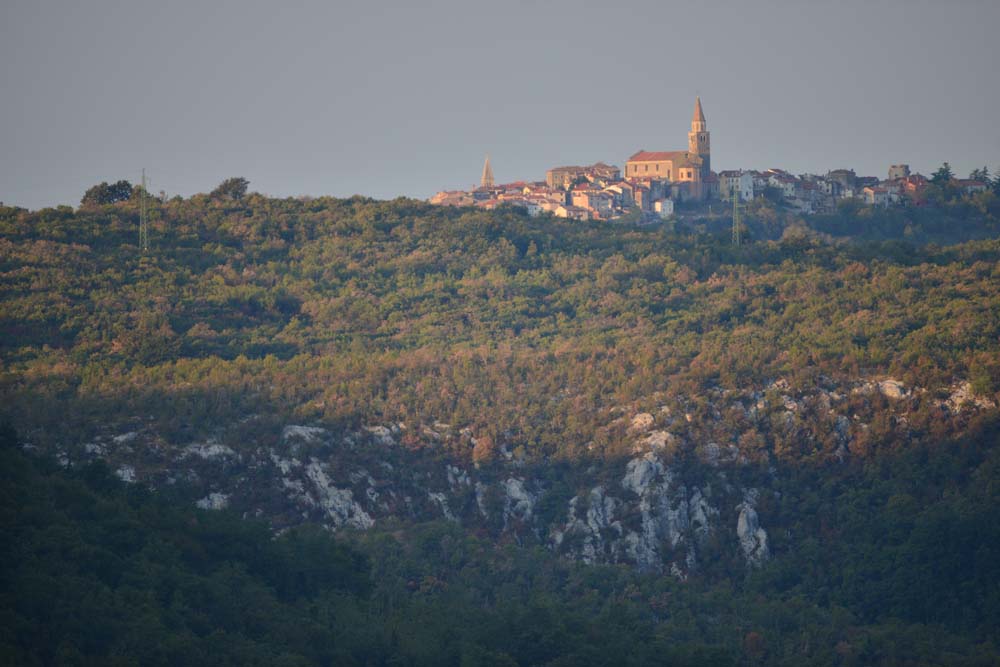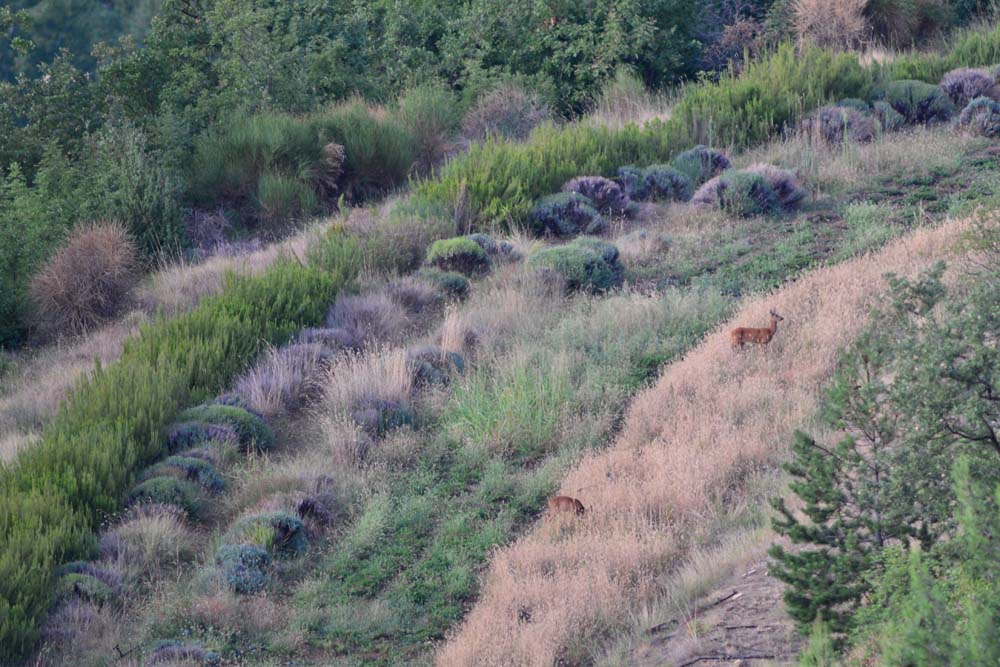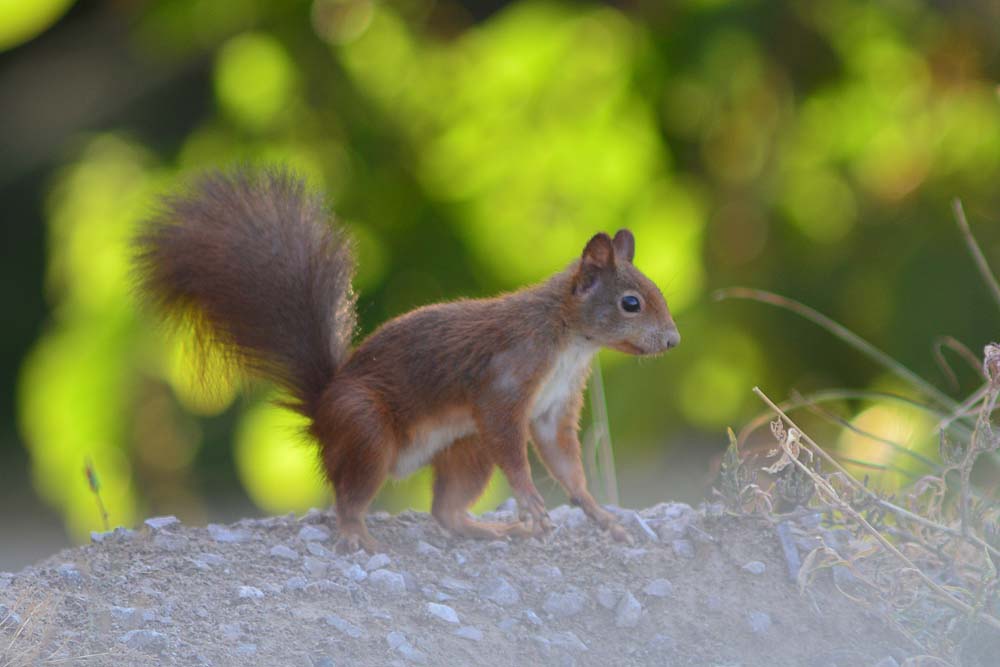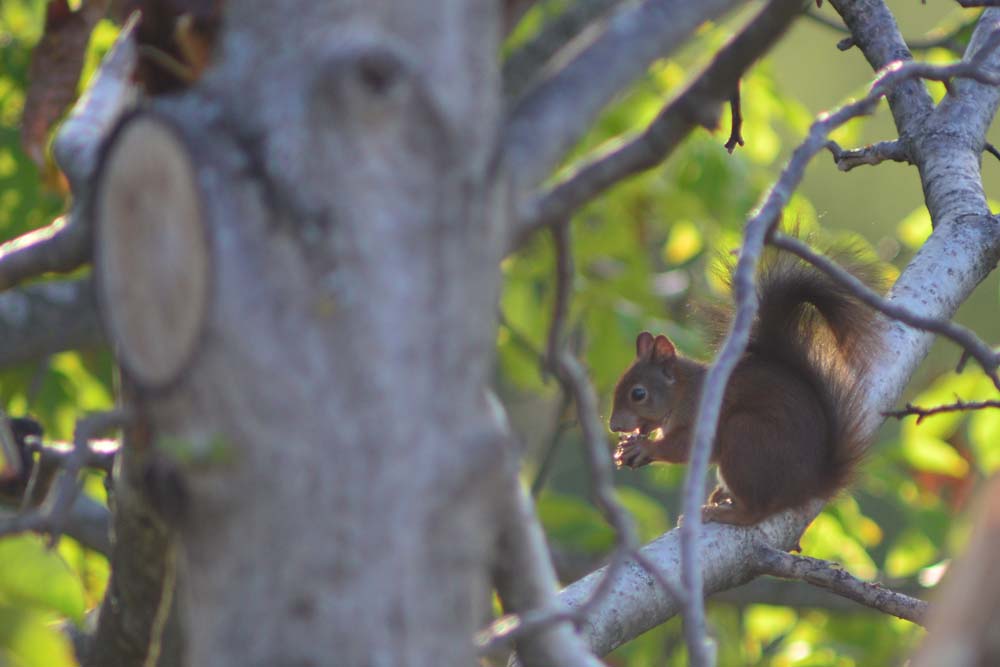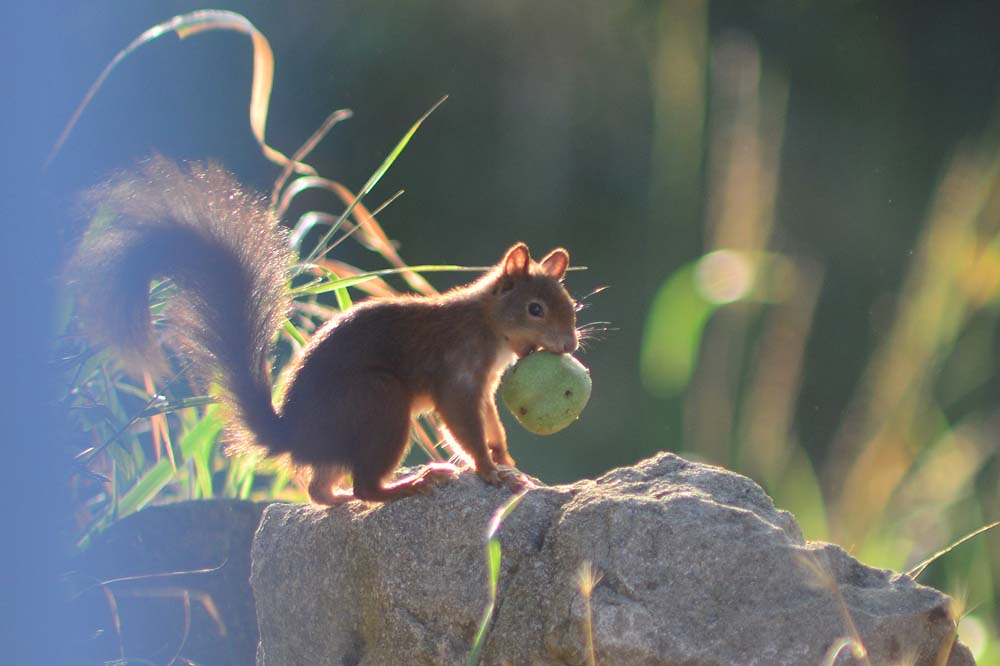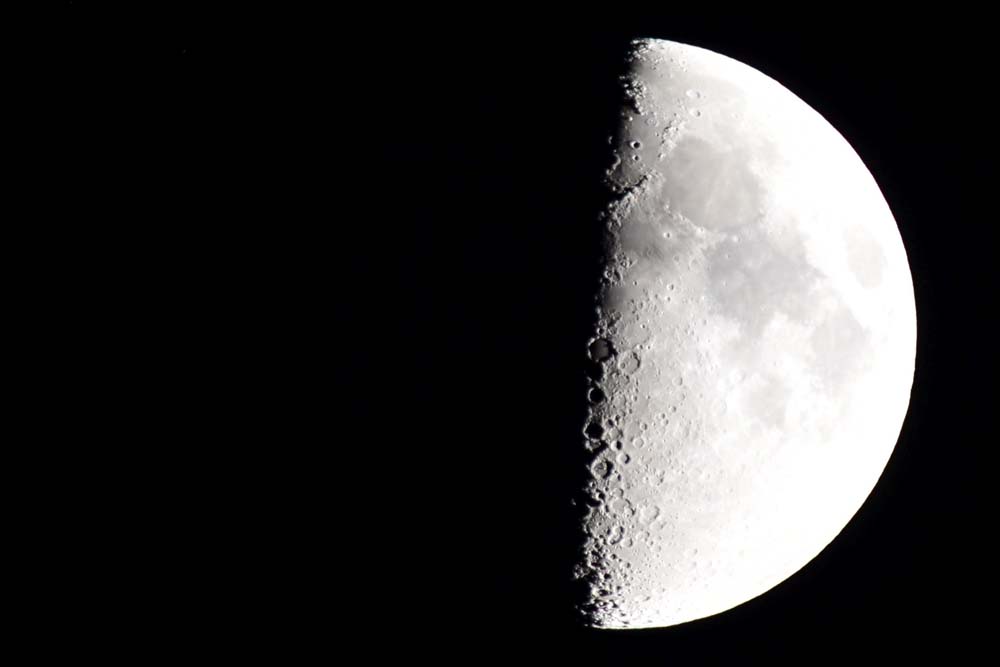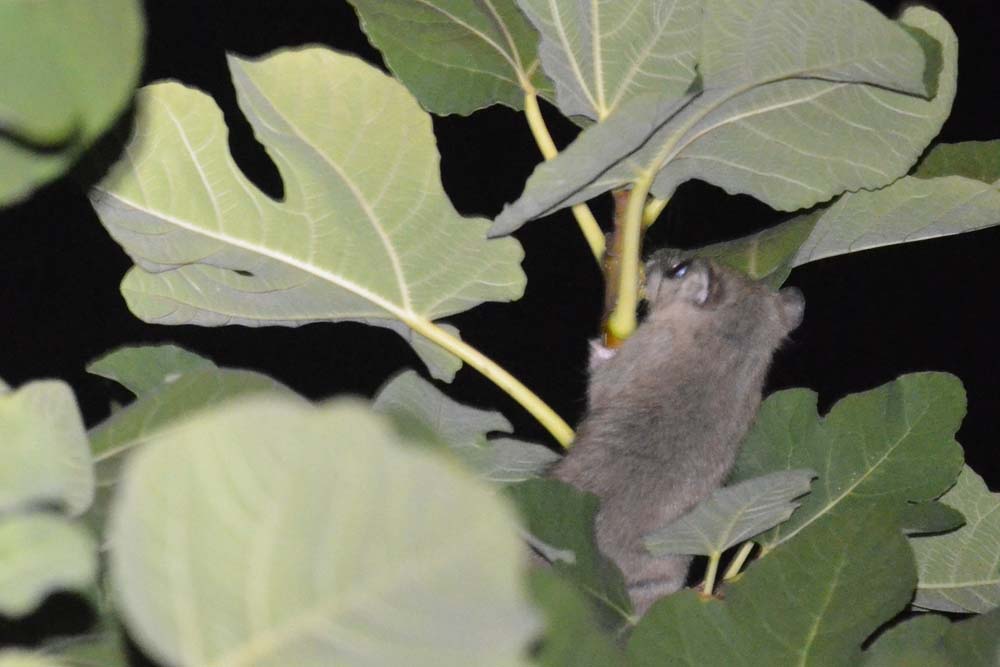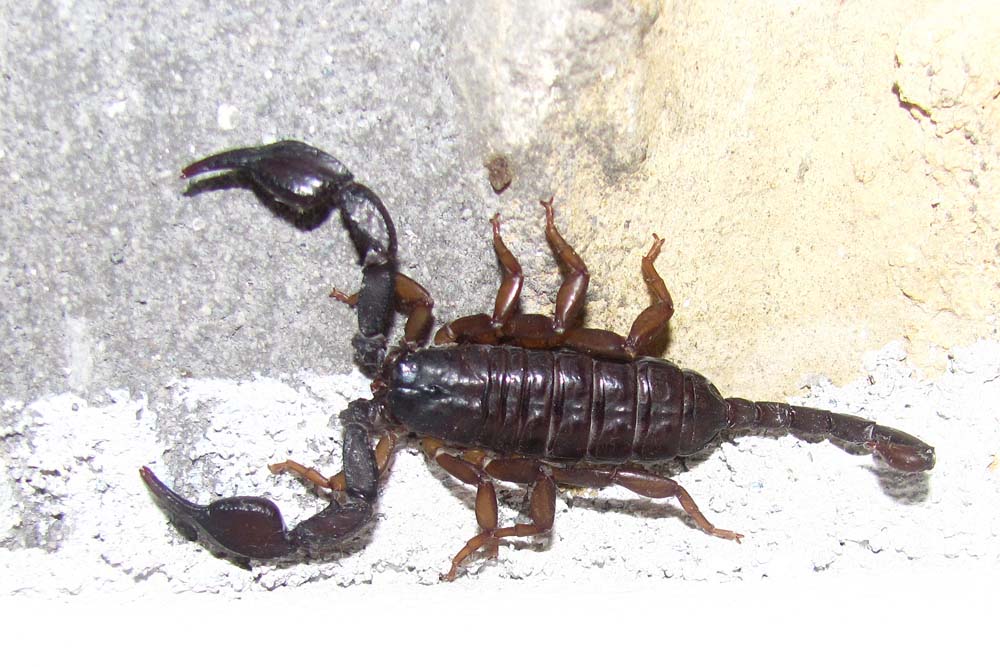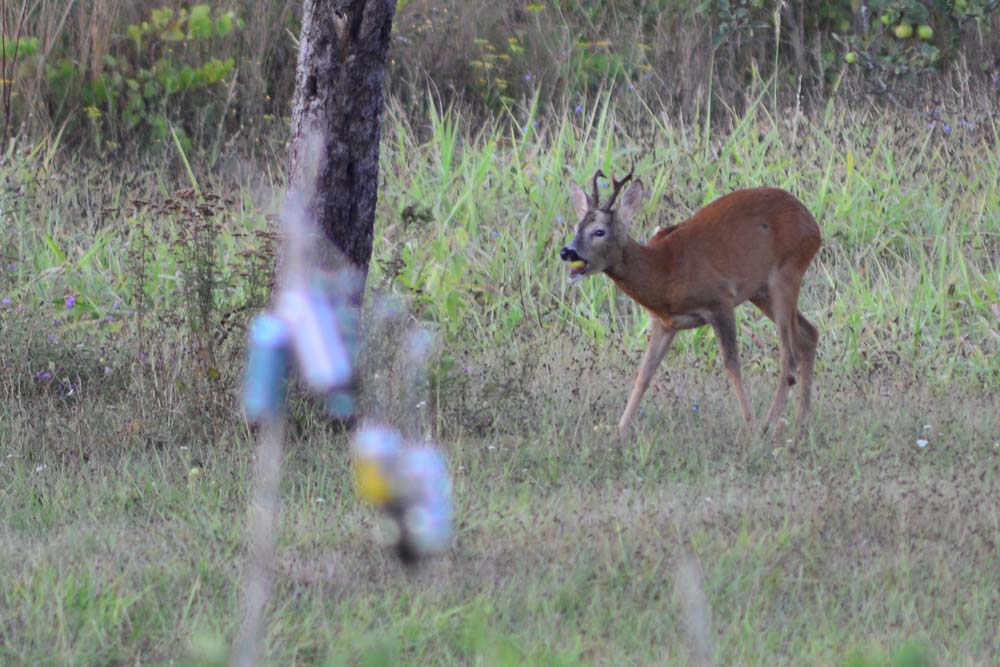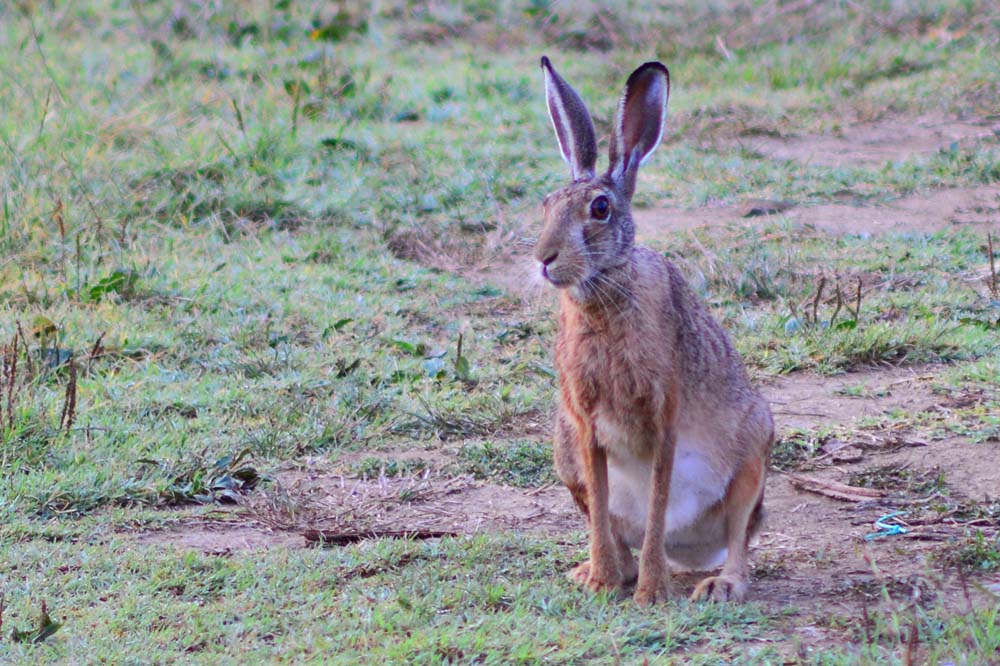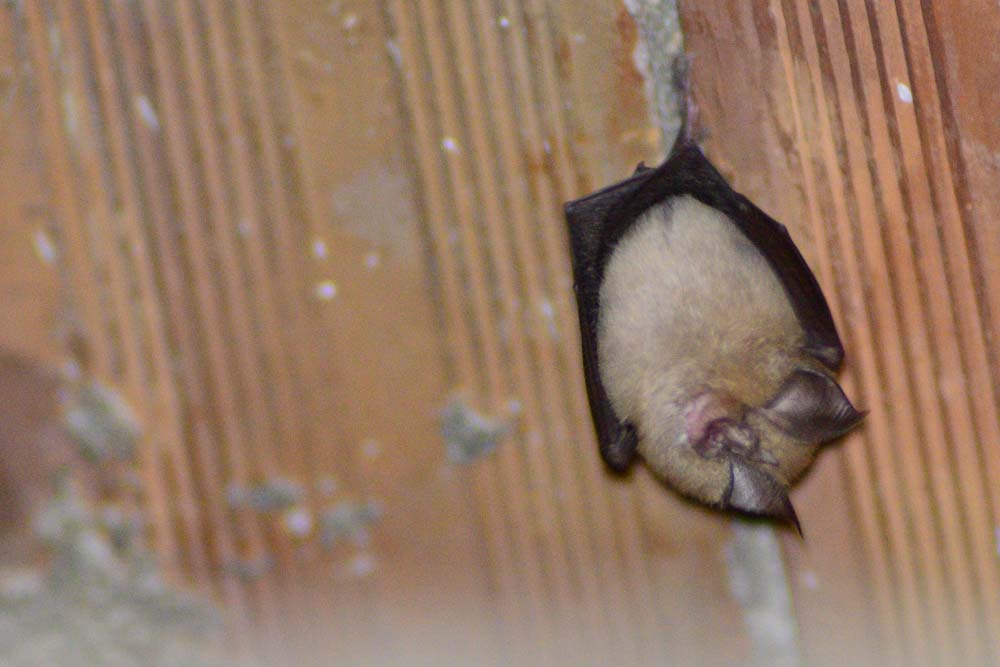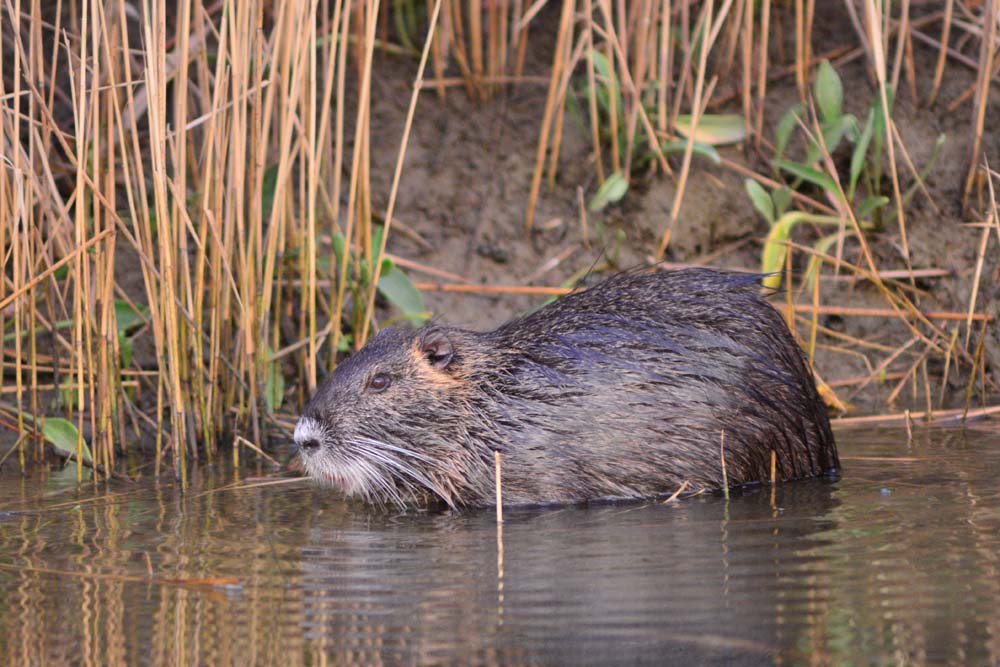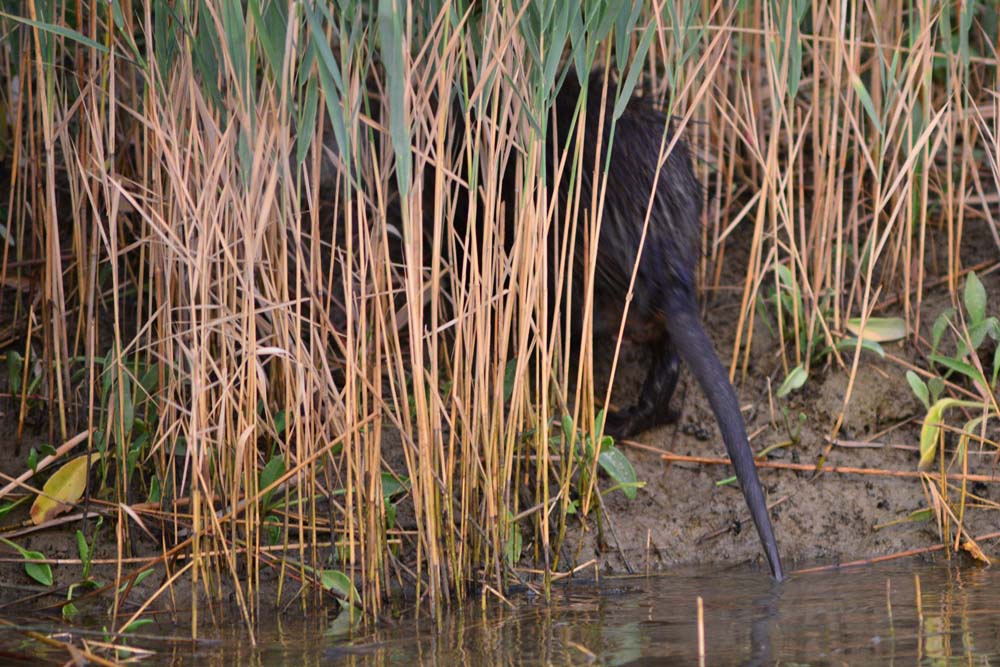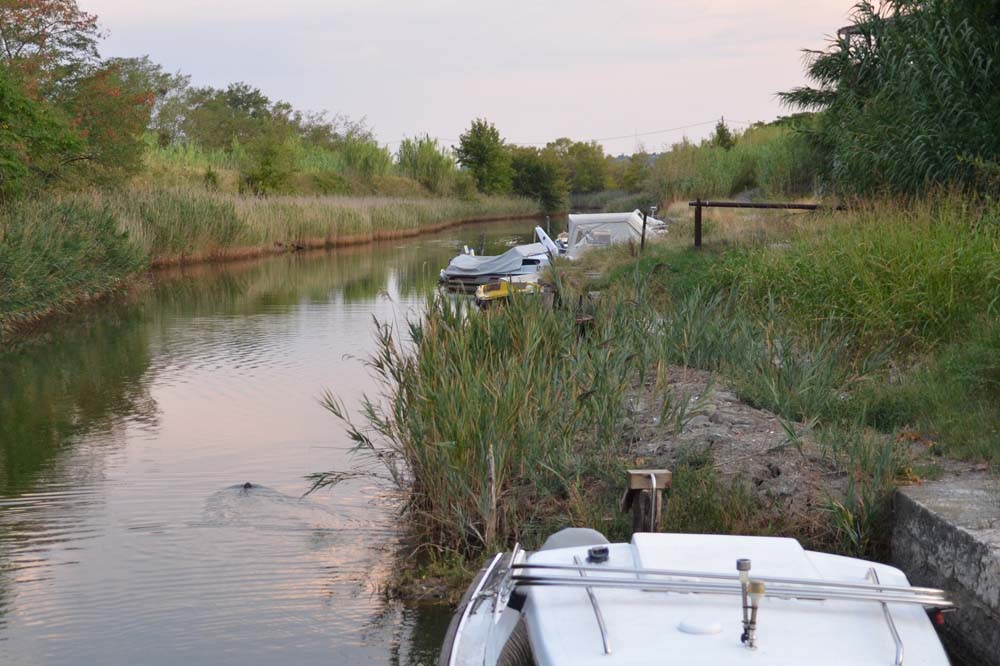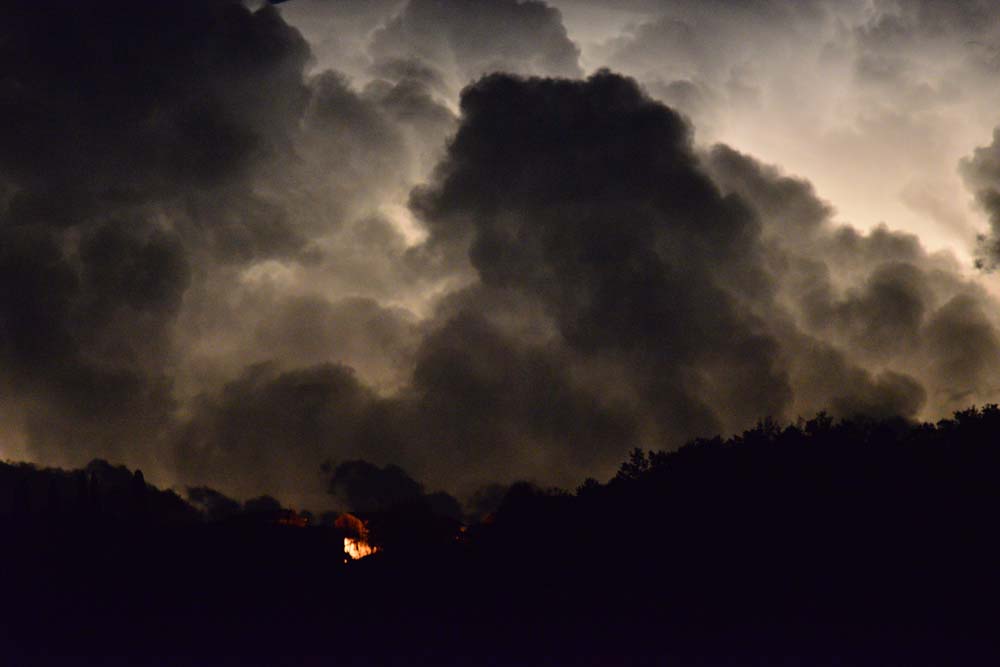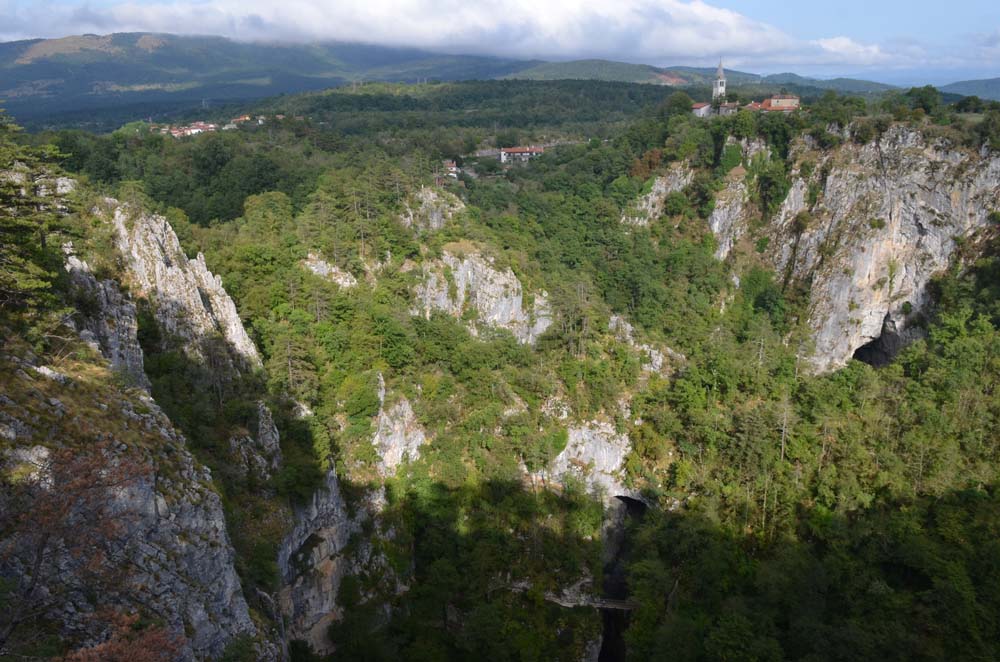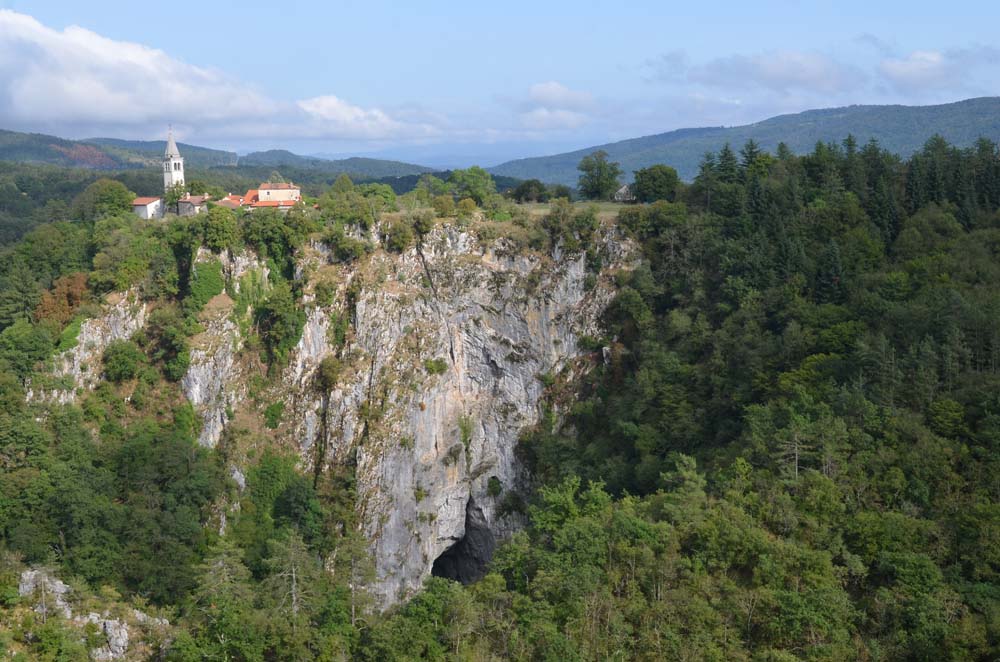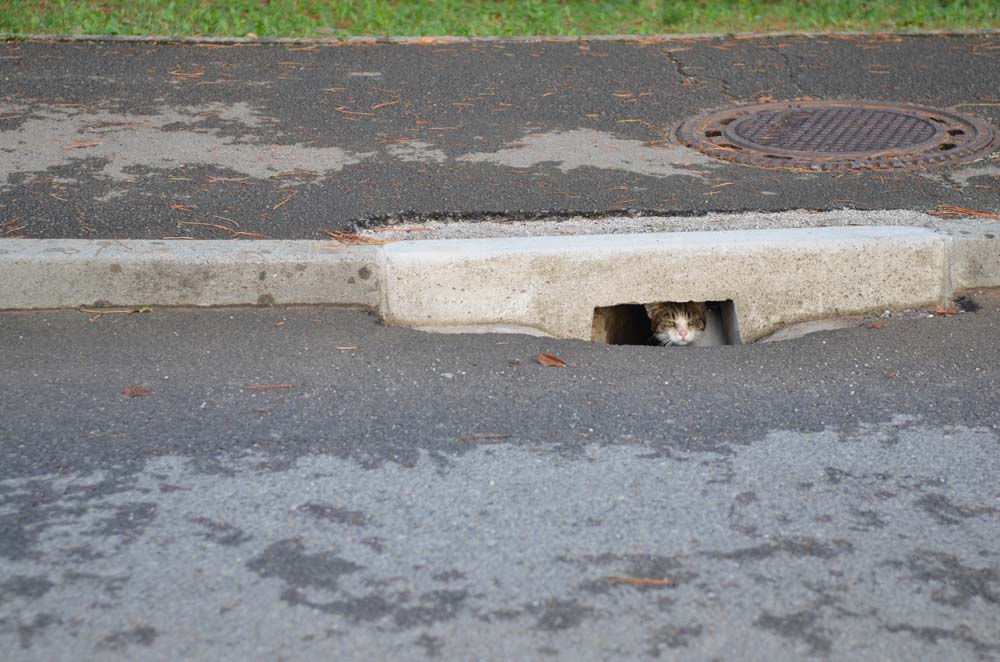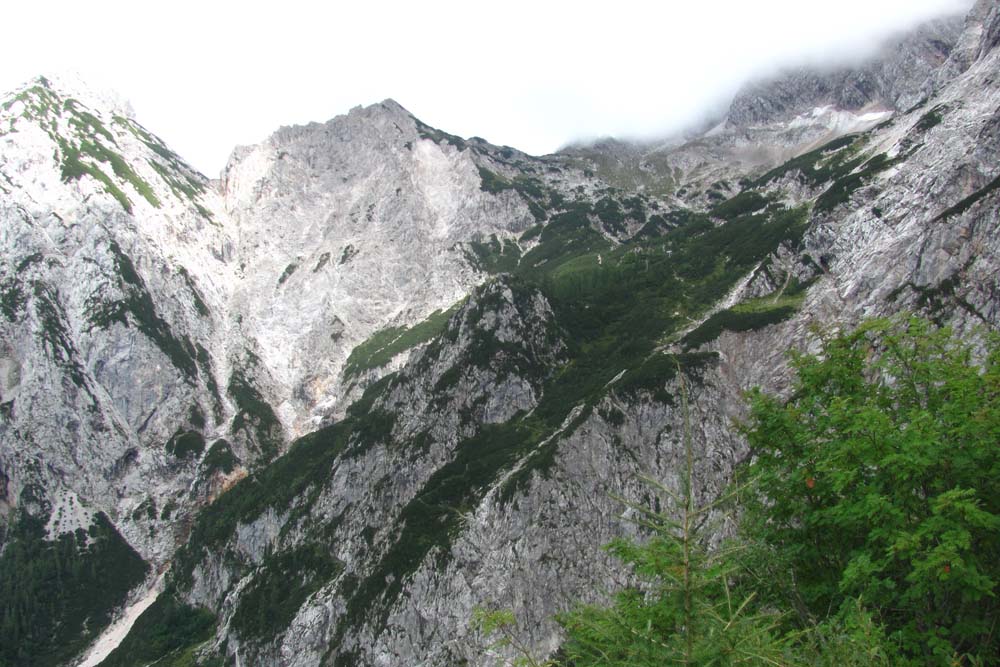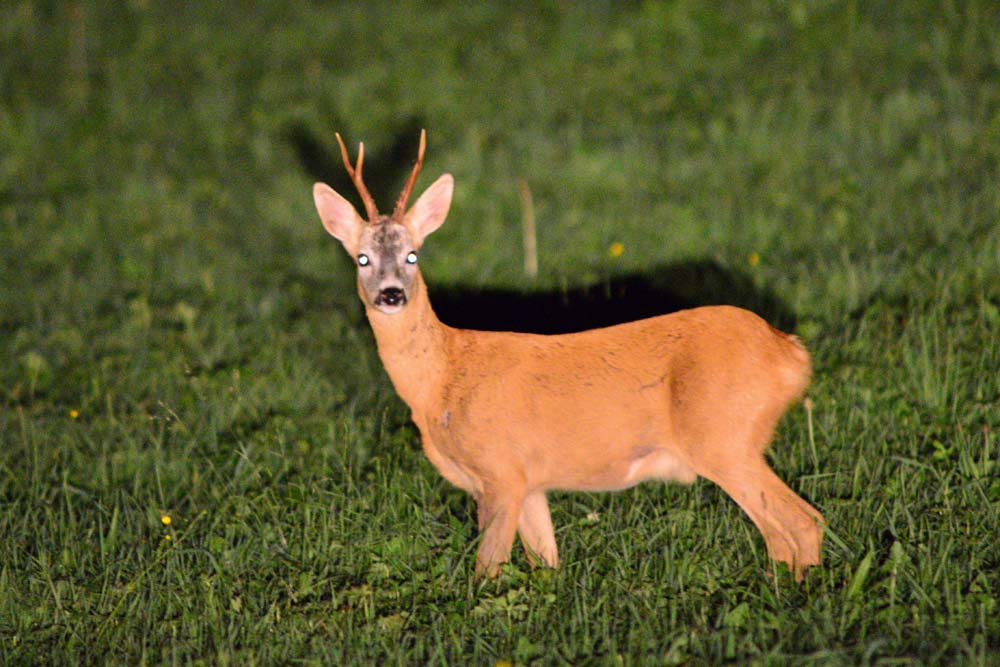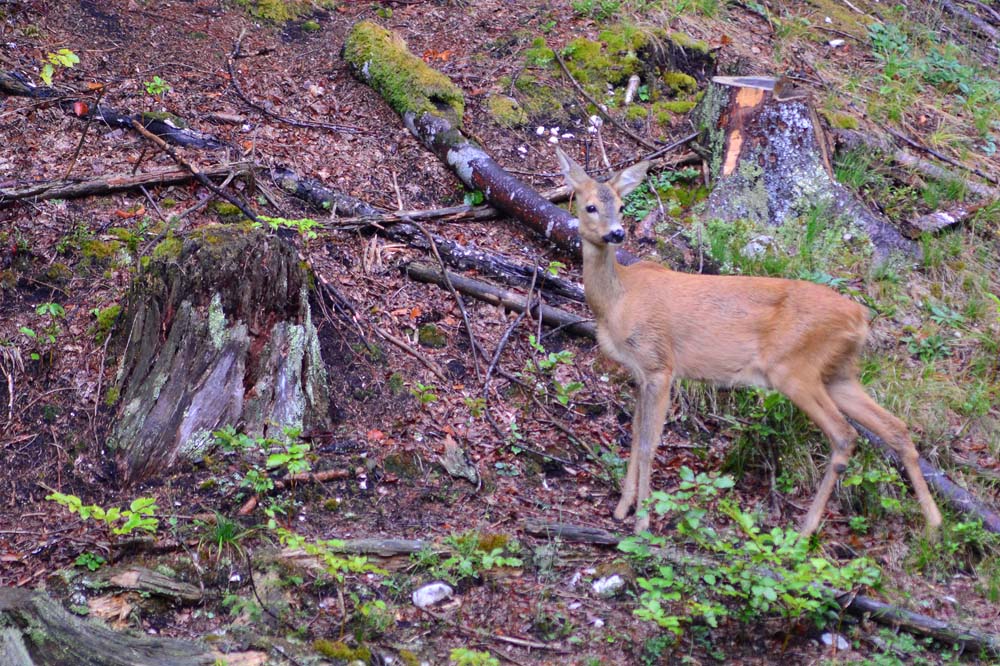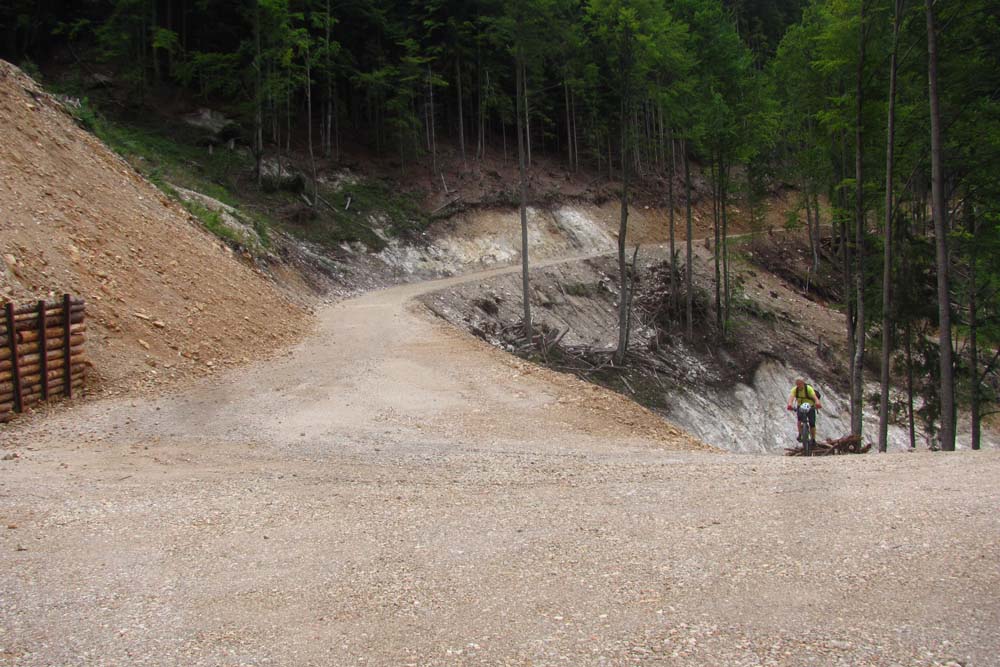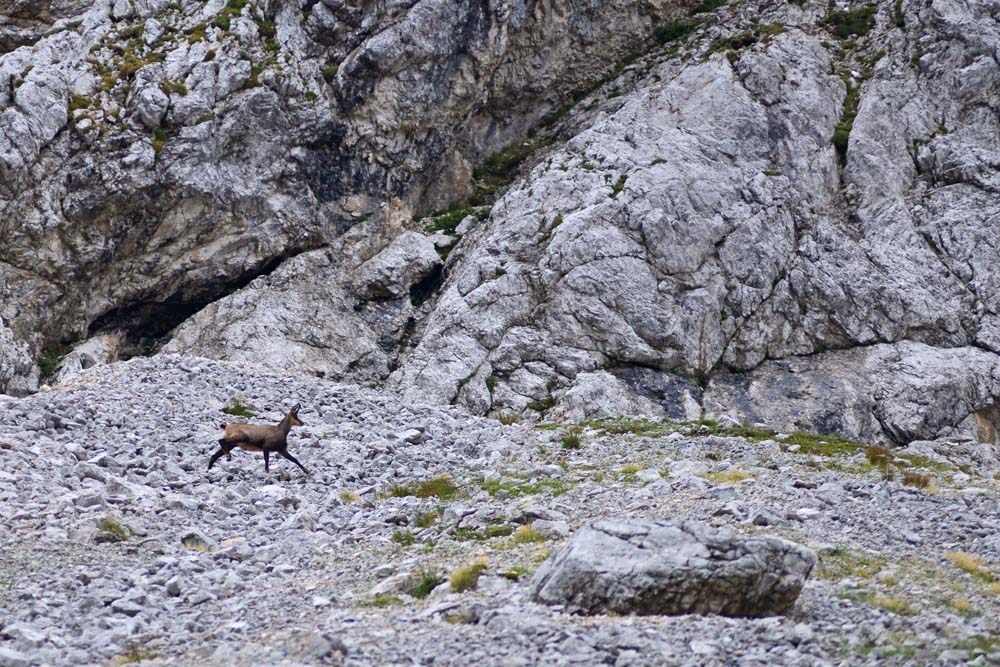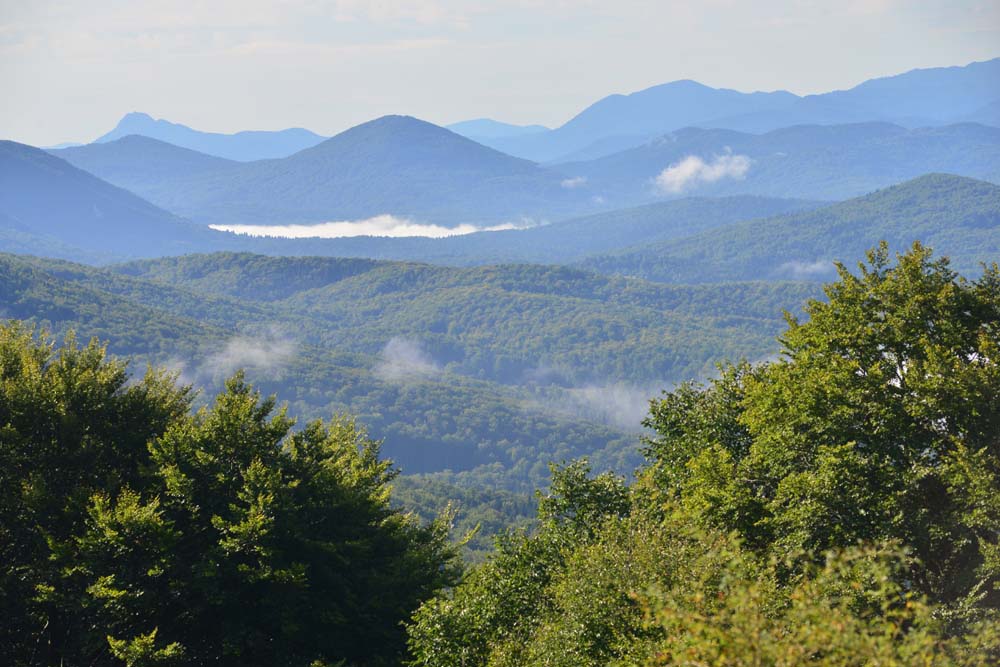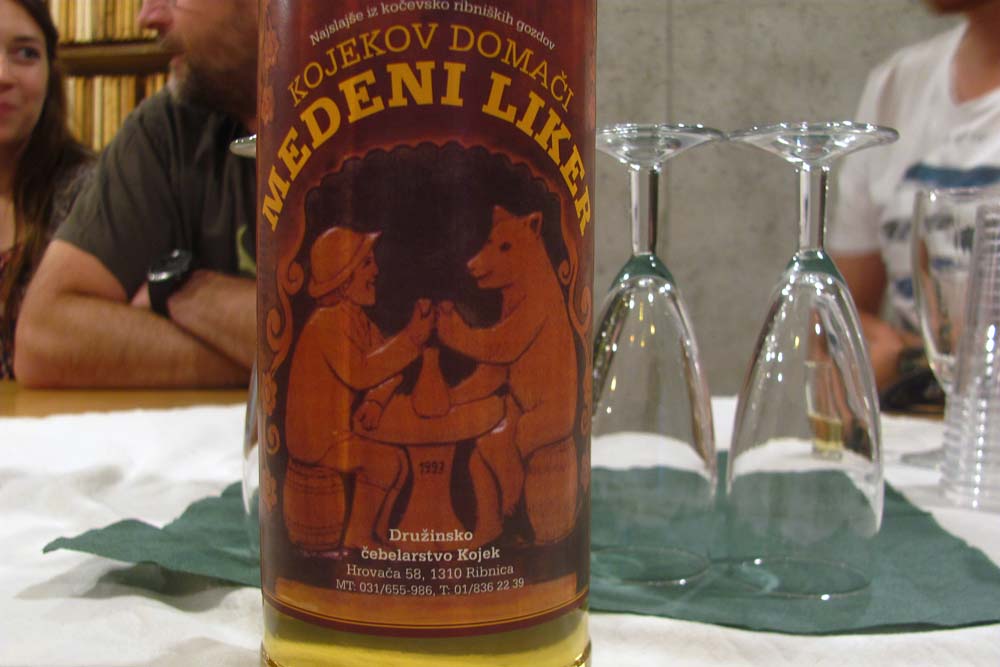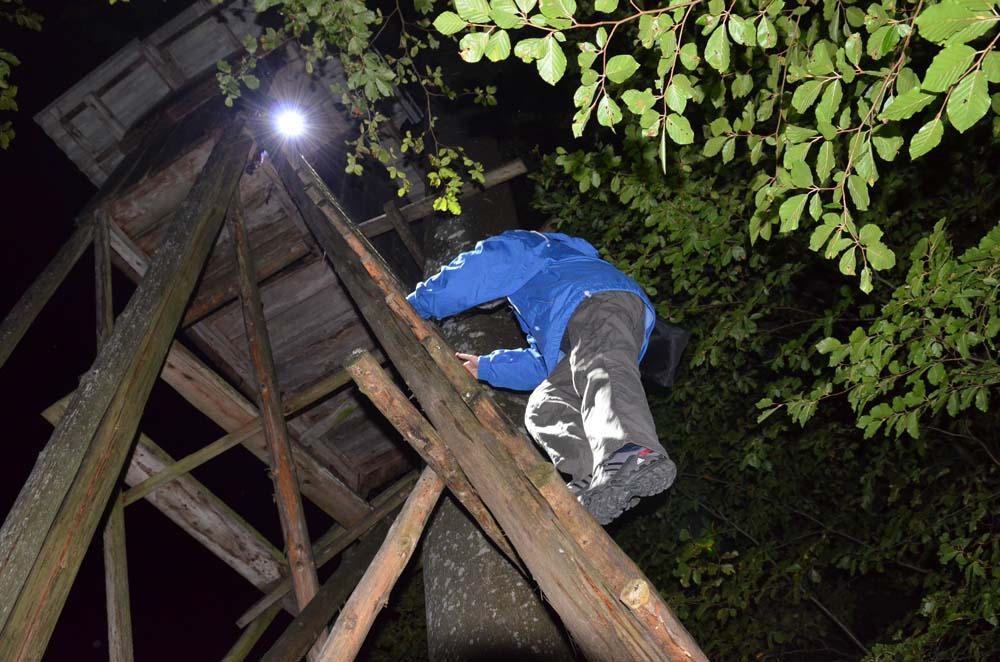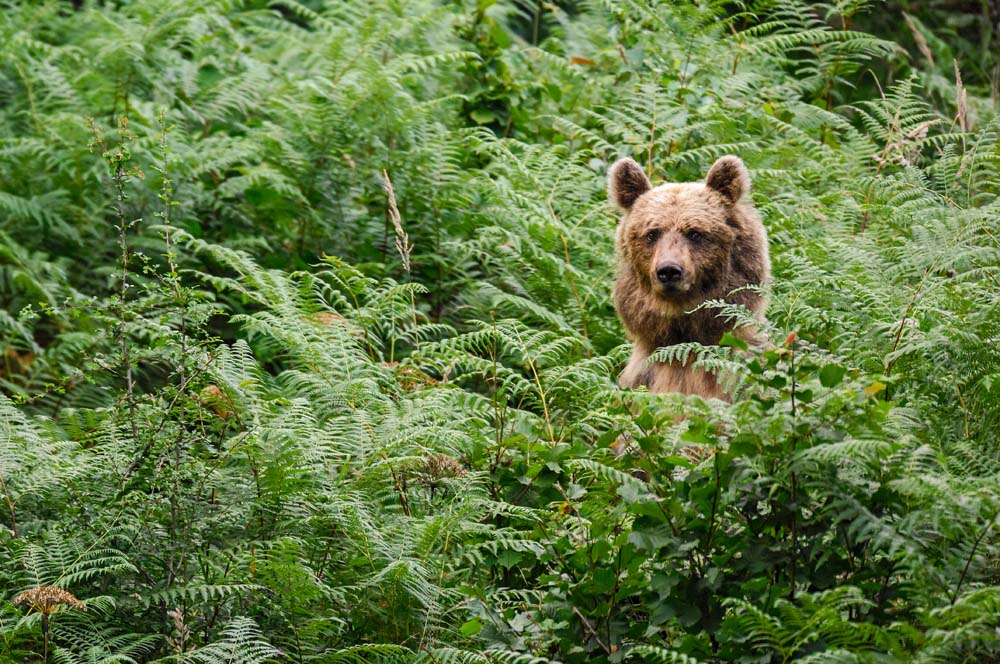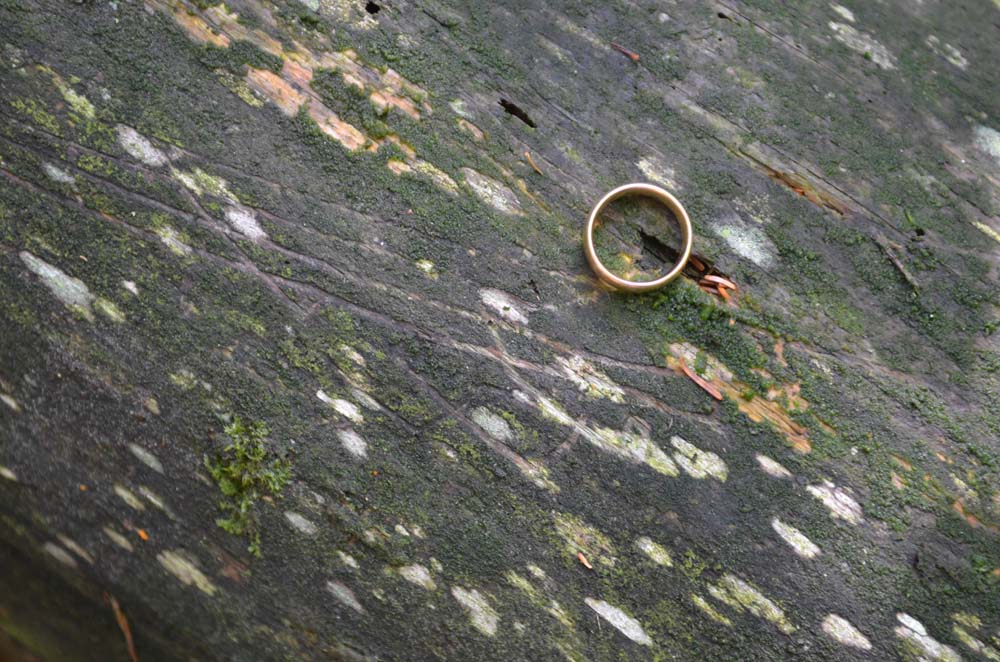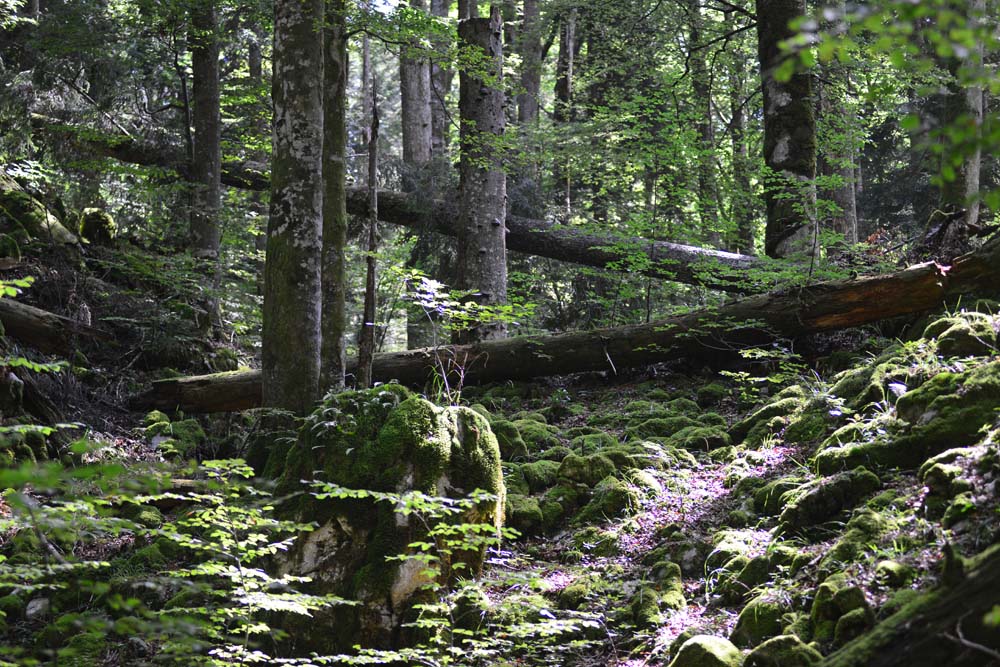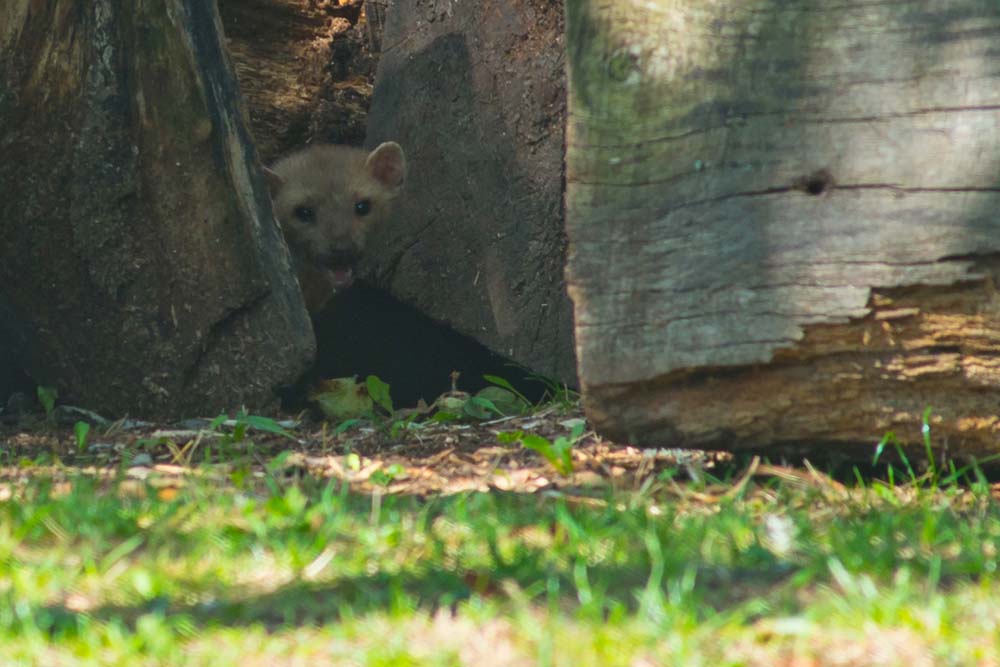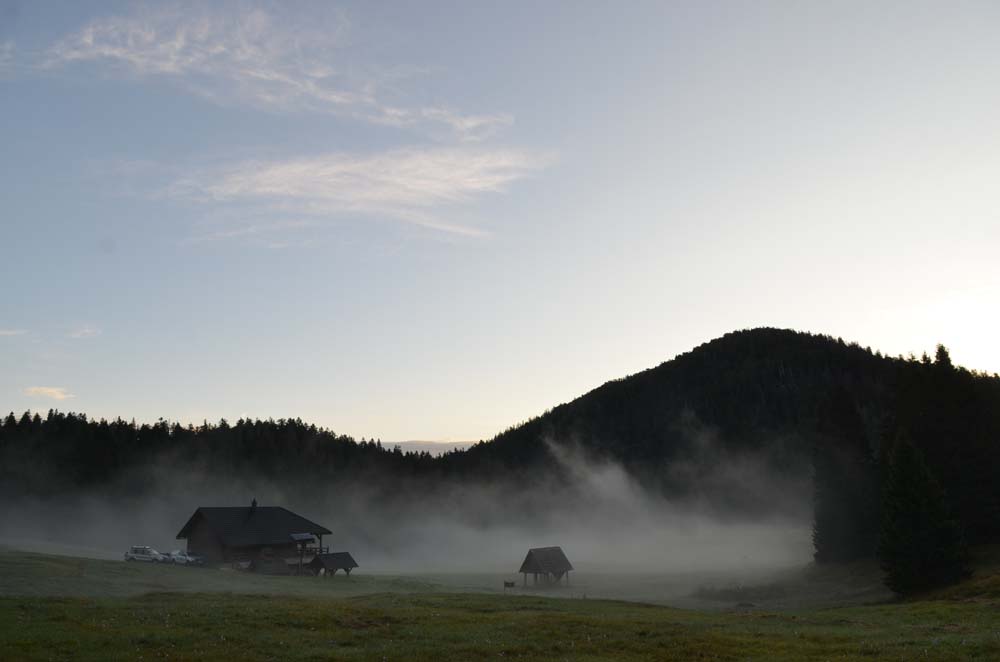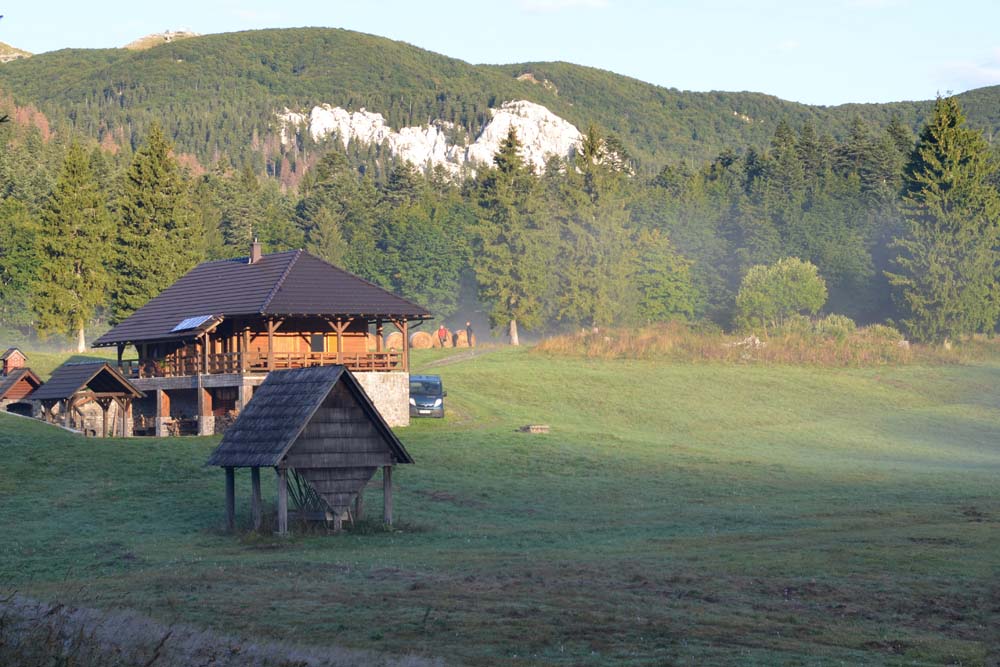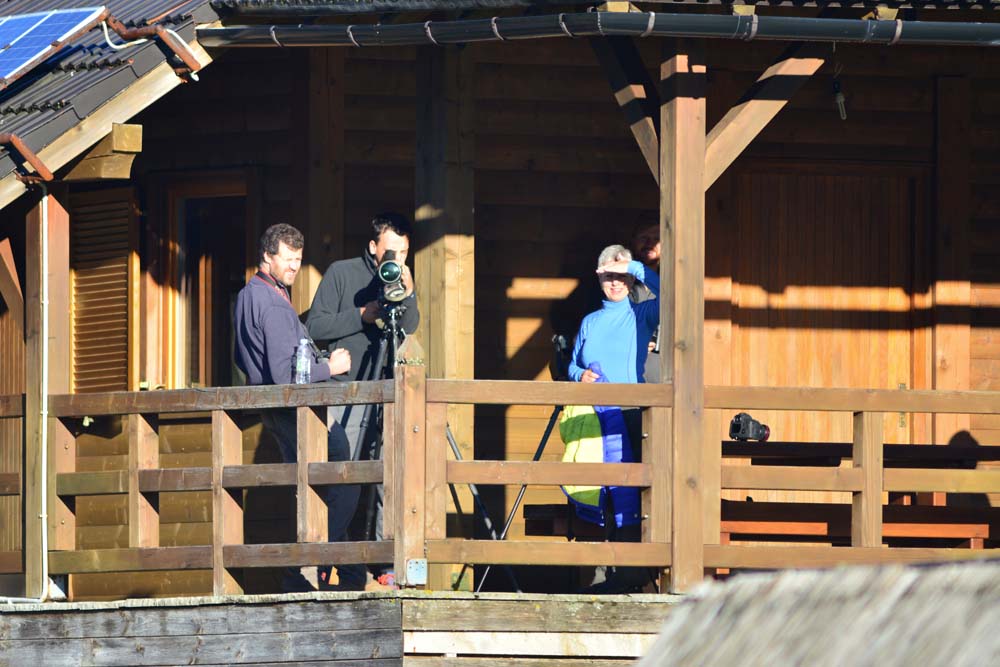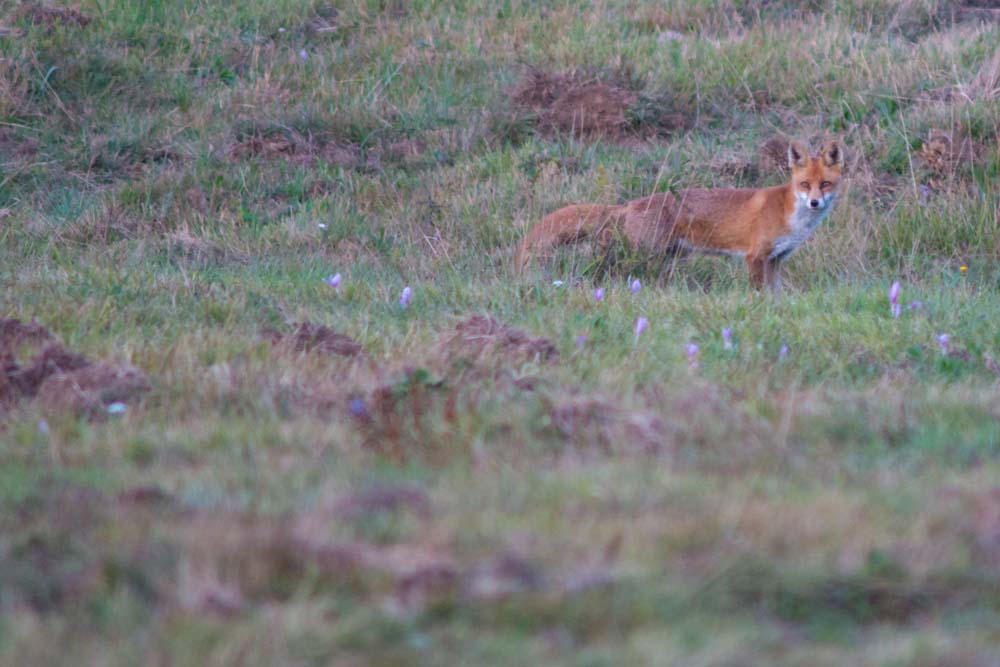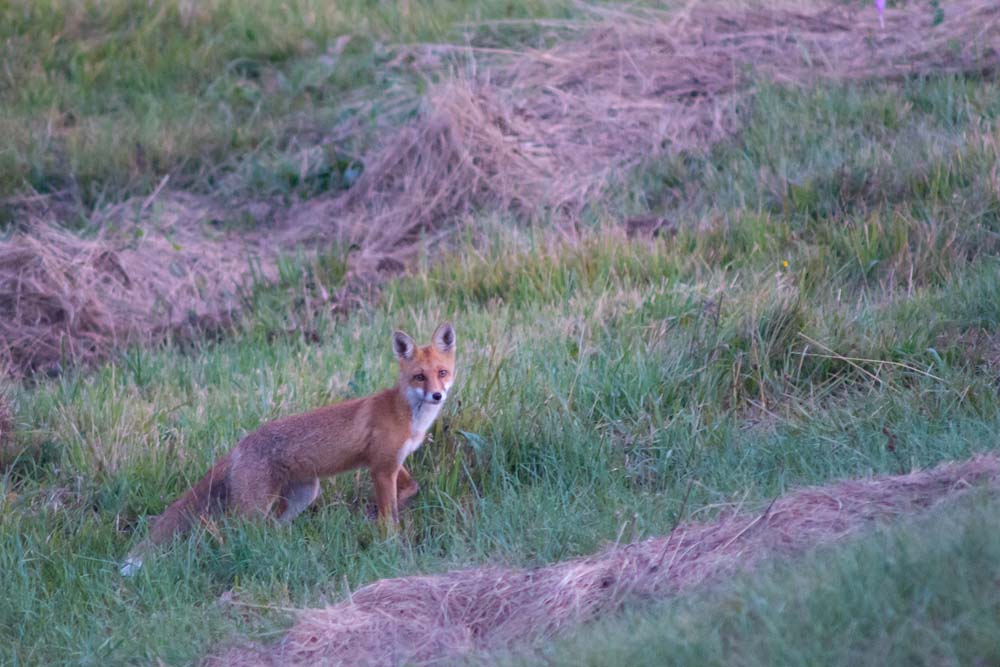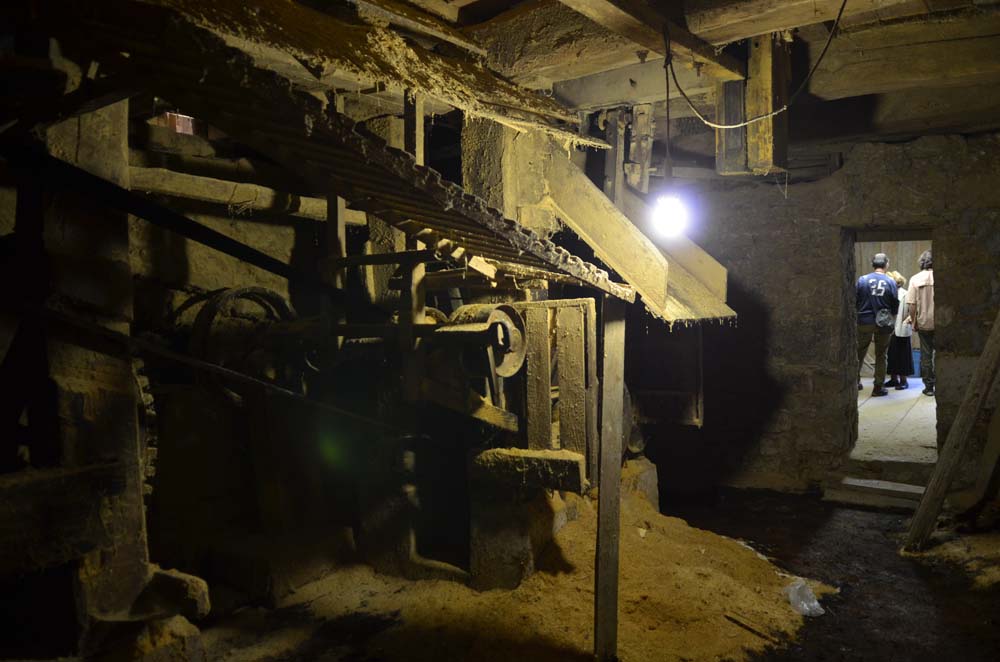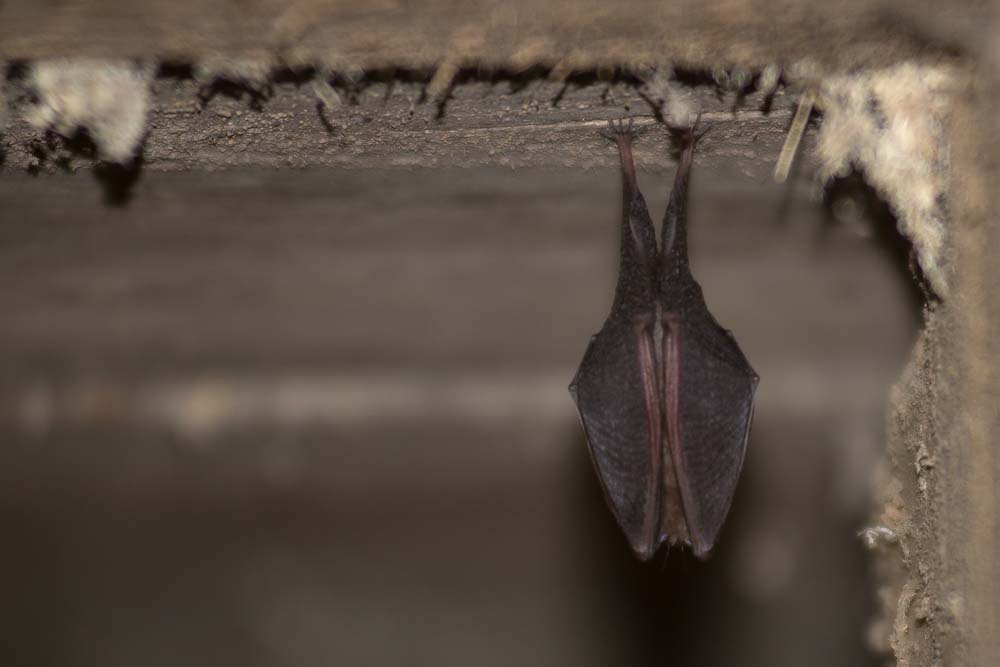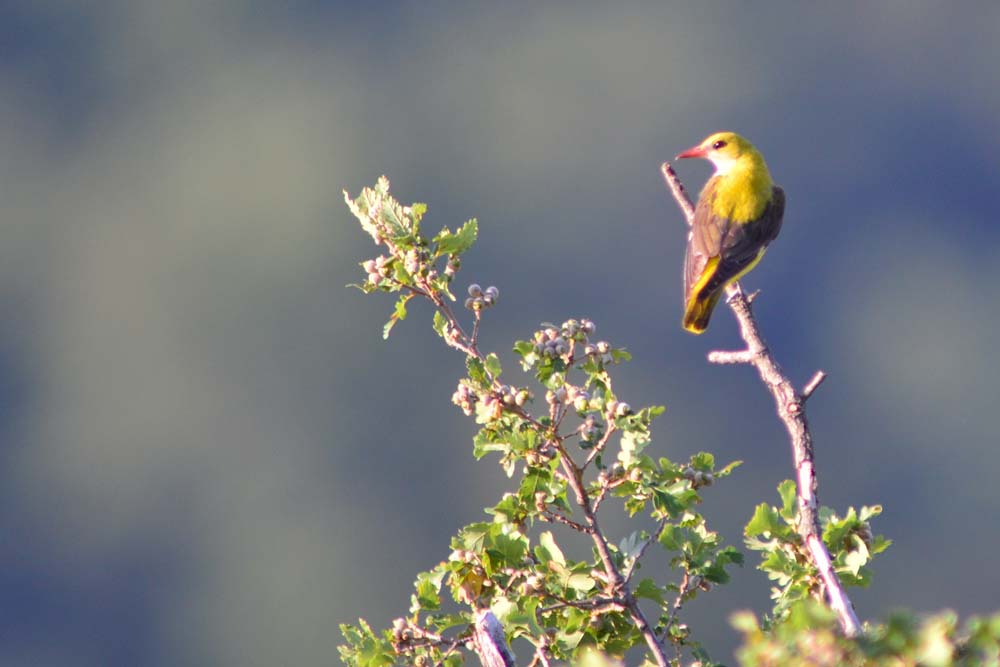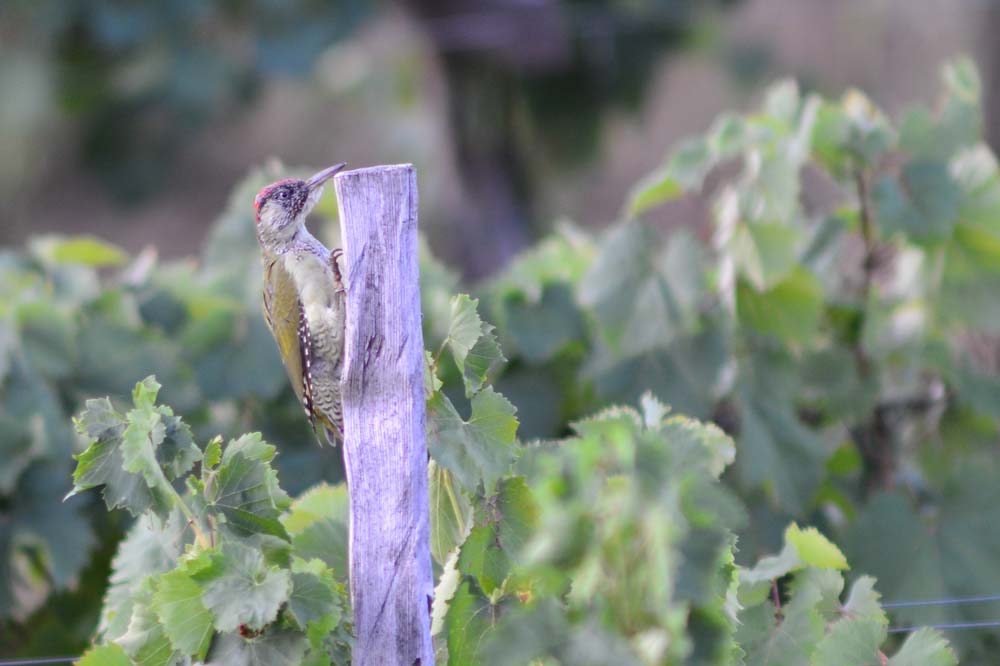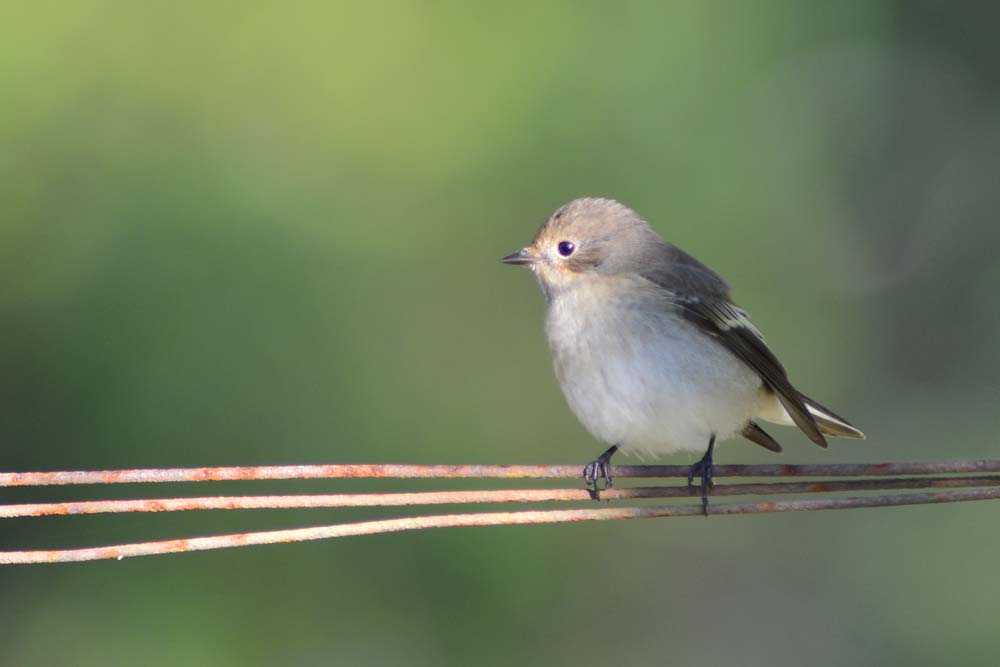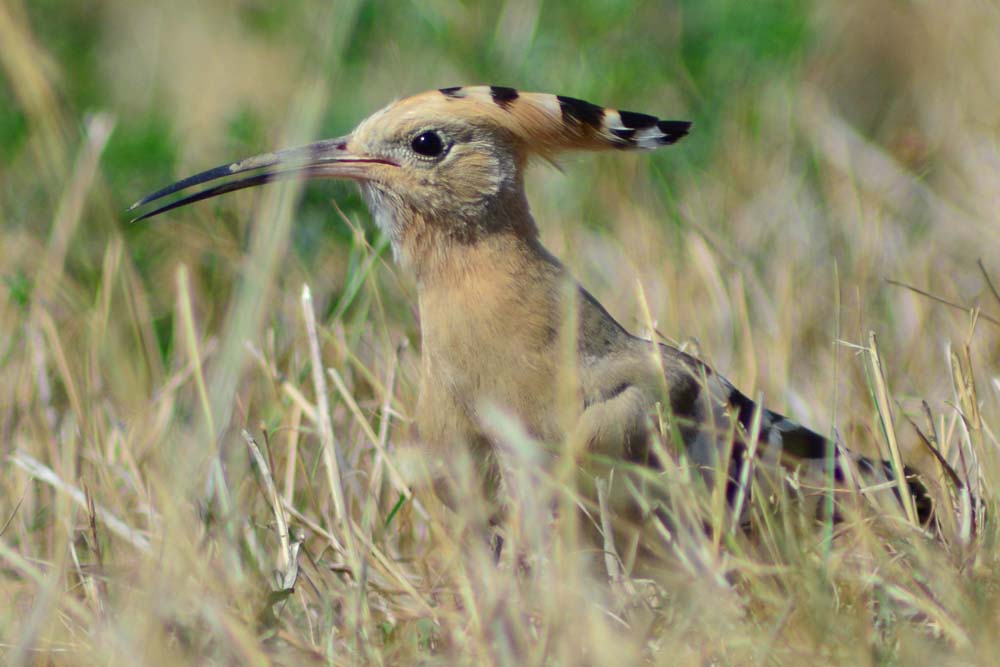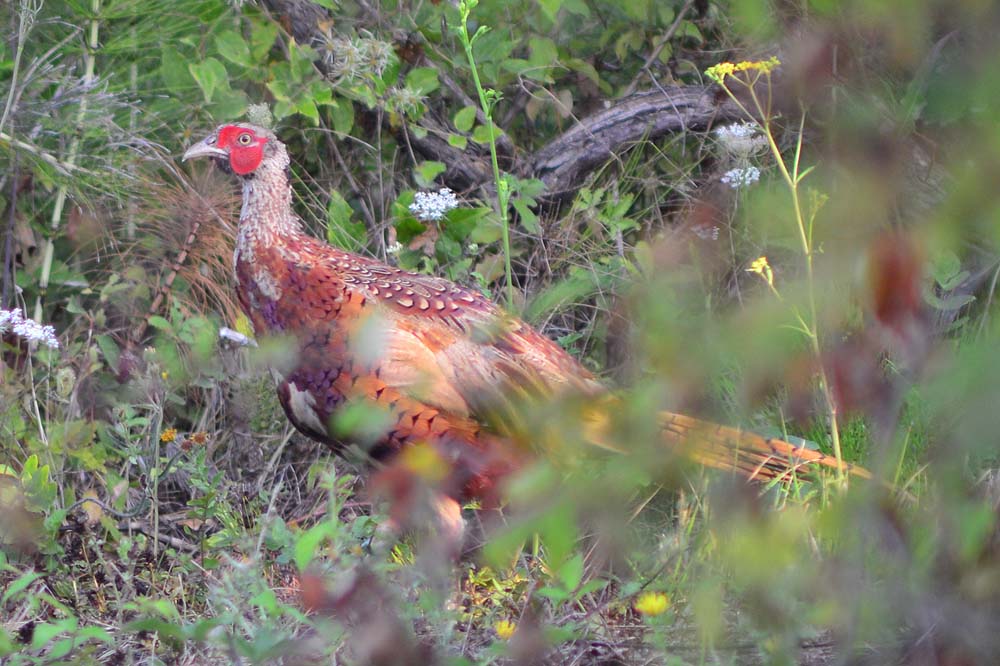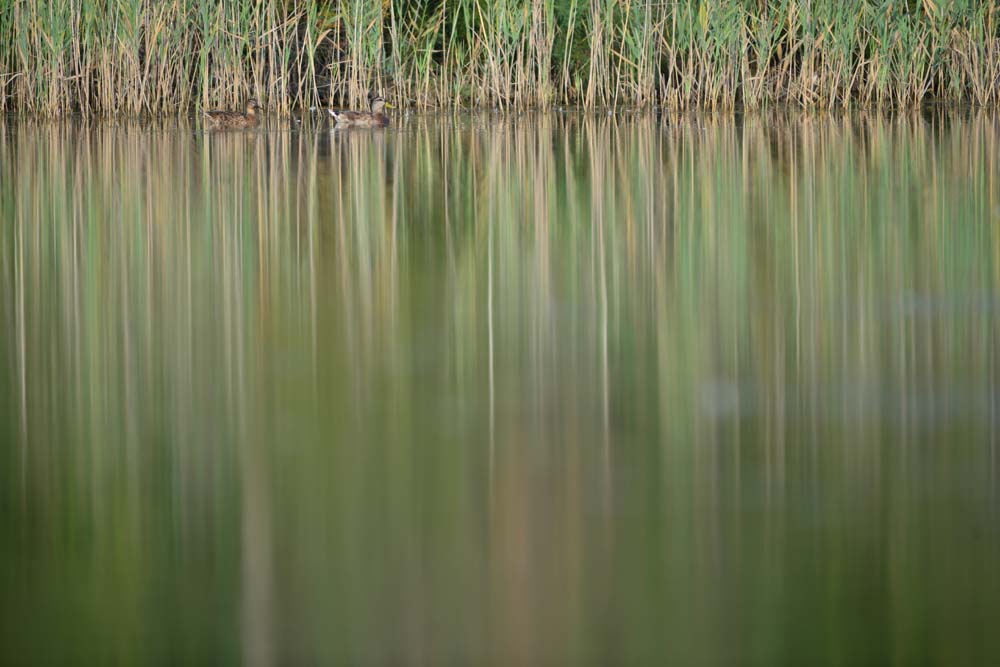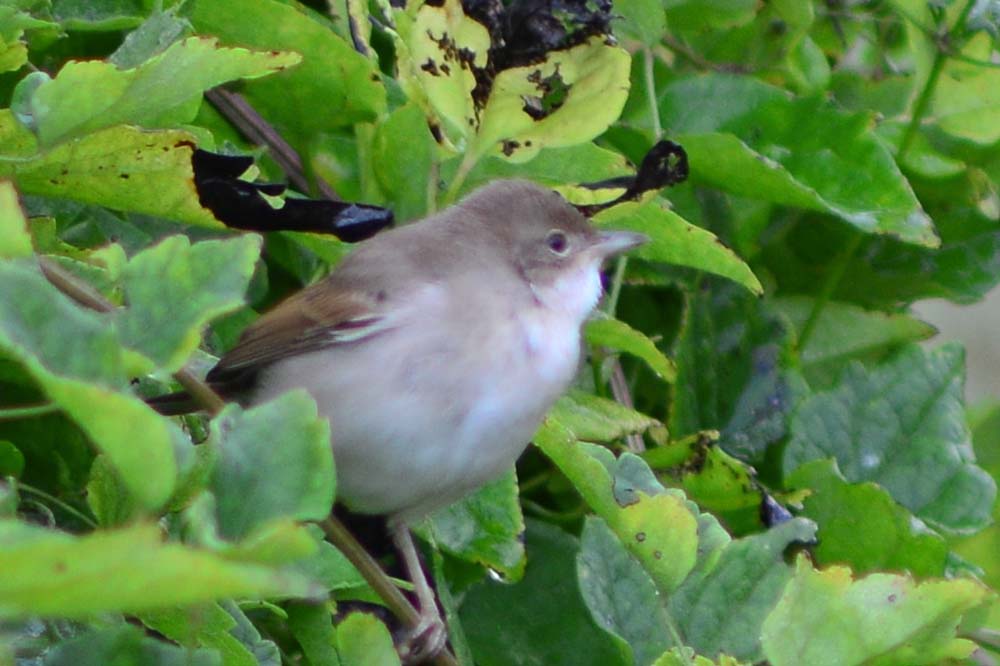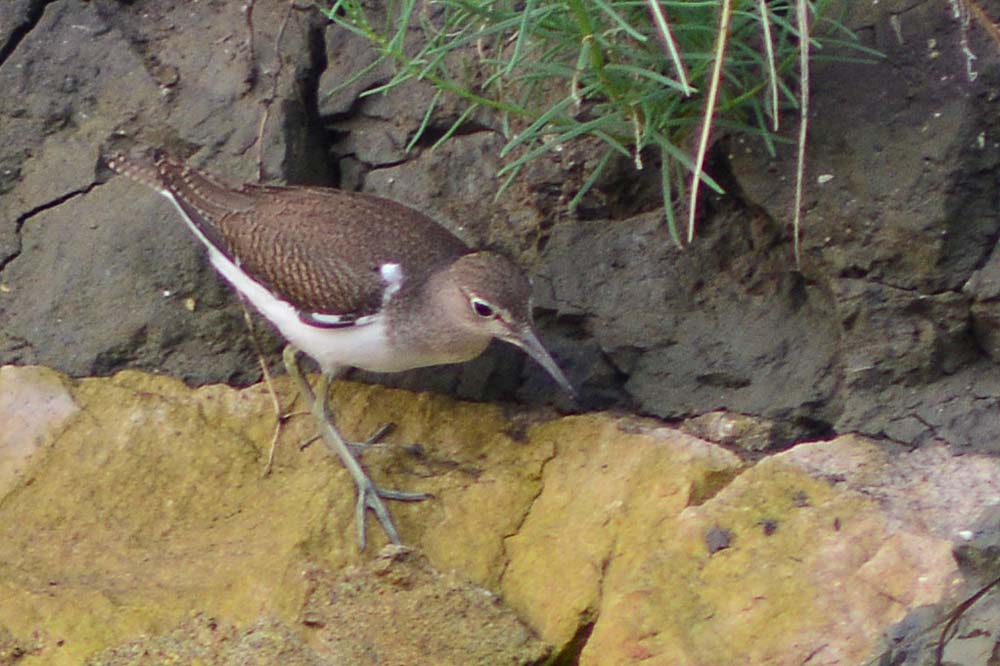Through Jon Hall from mammalwatching.com I heard of a 3-day-press-trip through Slovenia and Croatia. I applied and the organizers from LIFE DINALP BEAR welcomed me. My family and I tinkered our holidays around that event – and off we went to experience bears and Co.
Monday, August 28th
The Dragonja valley is our first destination. The valley is one of the few places in the south of Slovenia with some importance in terms of wildlife. While the valley bottom and the south-facing Slovenian side is characterized by small-scale farming (vineyards, orchards, vegetables), the north-facing Croatian slope is covered with deciduous forest.
We stay five nights in a newly renovated house in the tiny village of Krkavče. Krkavče is nestled on the shoulder of the lower Dragonja valley. From the terrace you get perfect views across and down the valley as well as views into the canopies of larger trees and those of fruit trees like figs – which turns out to be very favourable for wildlife watching.
Next to the house is a little olive grove, where I set two live traps for small mammals. Every evening I relocate the traps but I remain without luck.
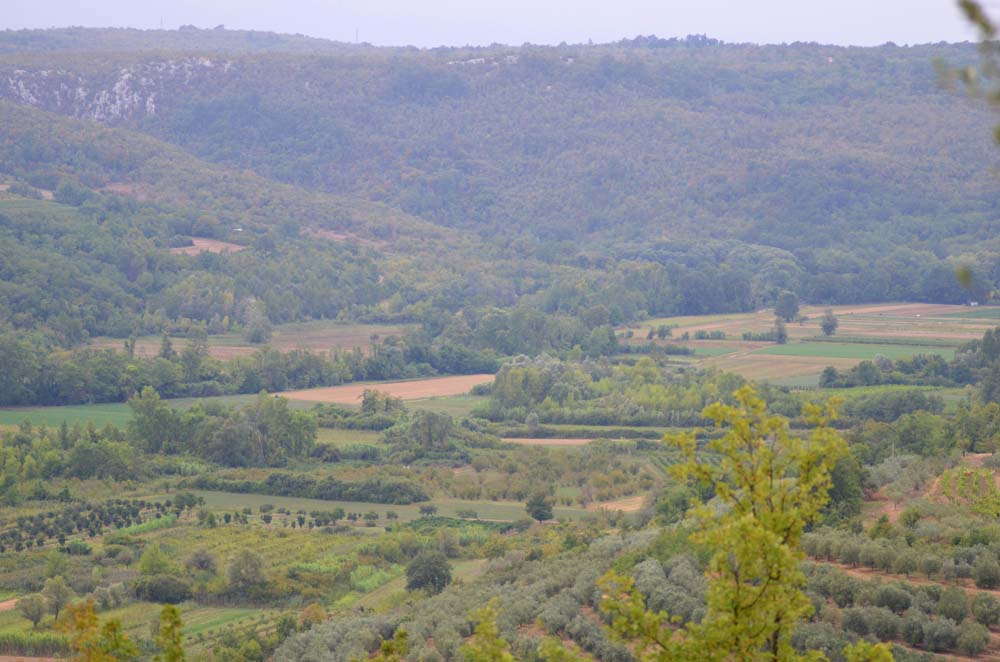
The valley bottom and the south-facing Slovenian side of Dragonja Valley is characterized by small-scale farming, the north-facing Croatian slope is covered with deciduous forest.
Tuesday, August 29th
I get up at dawn, make a coffee and see what I can get looking from our terrace. In a herb field I find a Roe Deer with a fawn. A Red Squirrel feeds on walnuts on the adjacent property.
The day we spend at Strunjan marine reserve, which is a very tiny stretch along the Adriatic coast, but well worth a visit for its aquatic life.
While spotlighting in „our“ olive grove the following night, I run into a Badger.
Wednesday, August 30th
I start again early, this time I take the car, spotlighting down the valley. I see one Hare and two Roe Deer. As soon as it gets light I choose a spot along the gravel road where a Hare had vanished previously. The idea is to wait until it comes back to get a better view and some photos. Chances for birds and Roe Deer seem to be good here too. And it pays.
We see another Roe Deer on the way back from the beach. I spotlight till after midnight around the house. I am tempted to note „Wild Boar“ on my list, since I hear constant, but distant weeking. Eventually I find out that my boars are actually Edible Dormice just infront of me in the fig tree. I manage to take a few poor photos of one of them.

I see this buck eating apples. It would have been great to see him feeding on grabes. I missed that.
Thursday, August 31st
I start at 5:30 am, trying to cover more terrain than the previous day. I get
- Roe Deer (9) – including 1 yearling male that I observe from our terrace (375 m)
- Hare (1)
- Red Squirrel (1)
- vole (1) running across the road, which I can’t identify (brownish, short tail, underparts not lighter?)
- mole (1) (roadkill)
- Mediterranean Horseshoe Bat (2 ), that I find in an abandoned buildung close to a natural limestone step in the river that serves as a bridge to cross the water. Quaint!
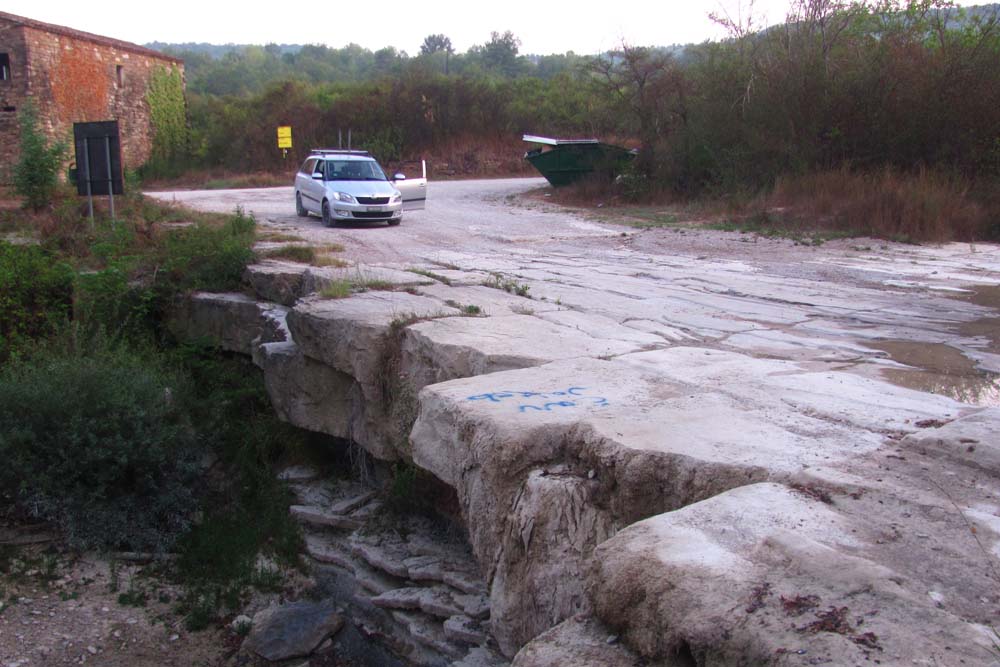
I have never seen something like that: A natural limestone step in the river serves as a bridge to cross the river bed. In the abandoned building in the background I find two bats.
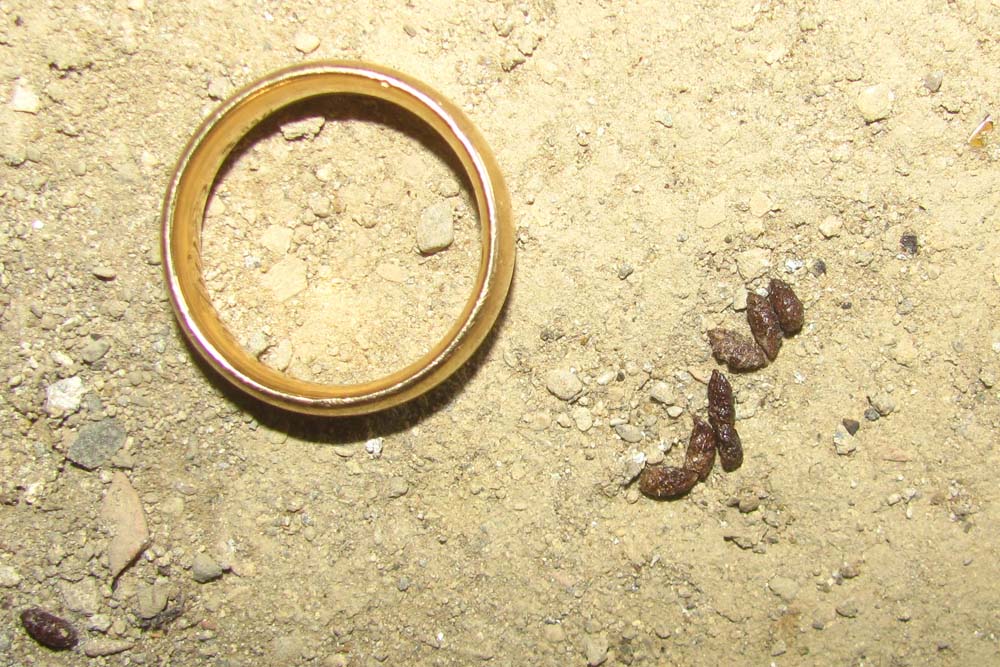
You have to look carefully to find bat shit – which can help to identify the species. (Ring ø: 2 cm)
Friday, September 1st
Up at 4 am, at 5 pm in the car. Again through the Dragonia-Valley on the way to Sečoveljske Soline near Seča.
I see
- Roe Deer (4) + 1 in the evening
- Hare (5)
- Fox (1)
Coypu: On the way from Dragonja to the saltworks of Sečoveljske Soline you pass the village of Sečovlje. There is a little bridge leading over a canal that runs towards the salt plains. I park the car there and begin spotlighting the water and the adjacent riparian area. Within a minute I get my first Coypu. There are three more. I see also bats flying around an industrial ruin. But my girls want rolls for breakfast, so I have to leave the place.
There is a hedgehog (roadkill) between Lucija and Seča. But the scent of fresh rolls prevents me from having a closer look at this dissected poor guy. It would have been worth it, since the area could be on the distribution boundary of both European hedgehog species: European Hedgehog (Erinaceus europaeus) – Braunbrustigel – and Northern White-breasted Hedgehog (Erinaceus roumanicus) – Nördlicher Weißbrustigel.
Etruscan Shrew: I found a few sources – not very reliable though – that list the Etruscan Shrew as another species of Sečoveljske Soline.
During the day we visit the Škocjan caves, a UNESCO World Heritage Site. Inside you find one of the largest known underground canyons in the world. Since it is a World Heritage Site rules are pretty strict. You are not allowed to take pictures inside – except for the exit area. After each section that has been passed, our guide switches off the light for the respective section. He also avoids to orient his flashlight towards bats. He says there is up to 10.000 individuals inside the cave. According to one source I found, that quotes the „Atlas of Bats (Chiroptera) of Slovenia“ more than 5.000 individuals of twelve different bat species have been identified in the Škocjan Caves. Again a different source – WWF: Ecosystem Services Evaluation in the Škocjan caves Regional Park – mentions the following species:
- Lesser Horseshoe Bat (Rhinolophus hipposideros) – Kleine Hufeisennase
- Adam’s Horseshoe Bat (Rhinolophus adami) – ?
- Eastern Bentwing Bat (Miniopterus fuliginosus) – ?
- Long-Fingered Bat (Myotis capaccinii) – Langfußfledermaus
- Lesser Mouse Eared Bat (Myotis blythii) – Kleines Mausohr
- Greater Mouse Eared Bat (Myotis myotis) – Großes Mausohr
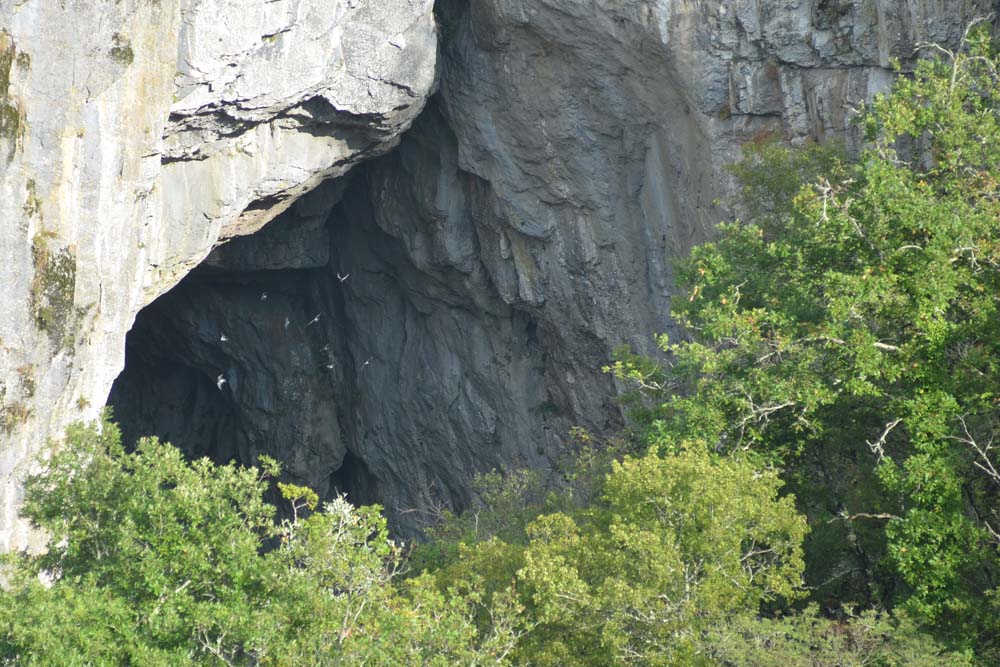
Common Pigeons (Columba livia) entering Škocjan Cave. At dusk and dawn you can observe bats here entering and leaving the cave.
There is a viewing platform that can be visited for free and after the cave opening hours. According to our guide you could wait there and see the bats below emerging from the cave entrance at dusk.
Saturday, September 2nd
One last time I go spotlighting in the Dragonia Valley area. I see
- Dormouse (1)
- Hare (7)
- Roe Deer (5)
Within two and a half hours driving we get from the southern to the northern end of Slovenia (≈ 170 km).
We stay with a farmer family outside the village of Jezersko within the Karavanks – the mountain range that seperates Slovenia from the state of Carinthia in Austria.
On the first evening I see on the farm’s meadow 1 Roe Deer and 1 Hare. I set my traps in the vicinity of the farm buildings.
Sunday, September 3rd
During an early drive through the forests of the colline zone I see
- Roe Deer (12)
- Hare (2)
- Red Deer (≈ 7)
I get 1 Yellow-necked Mouse in one of my traps.
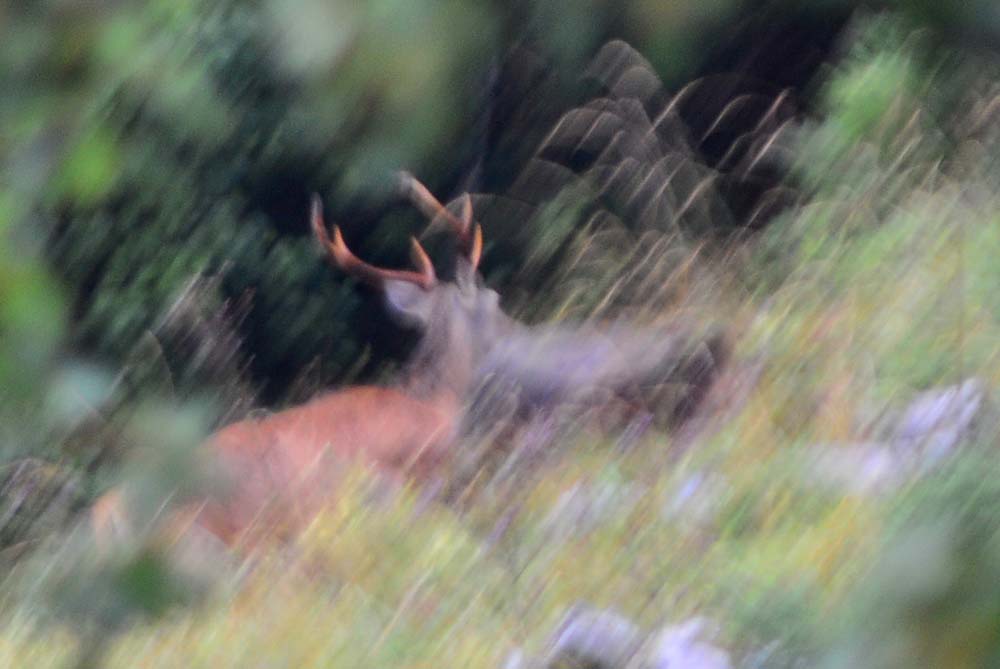
While checking the colline zone of the surrounding forest, I find a small herd of Red Deer, including this young stag.
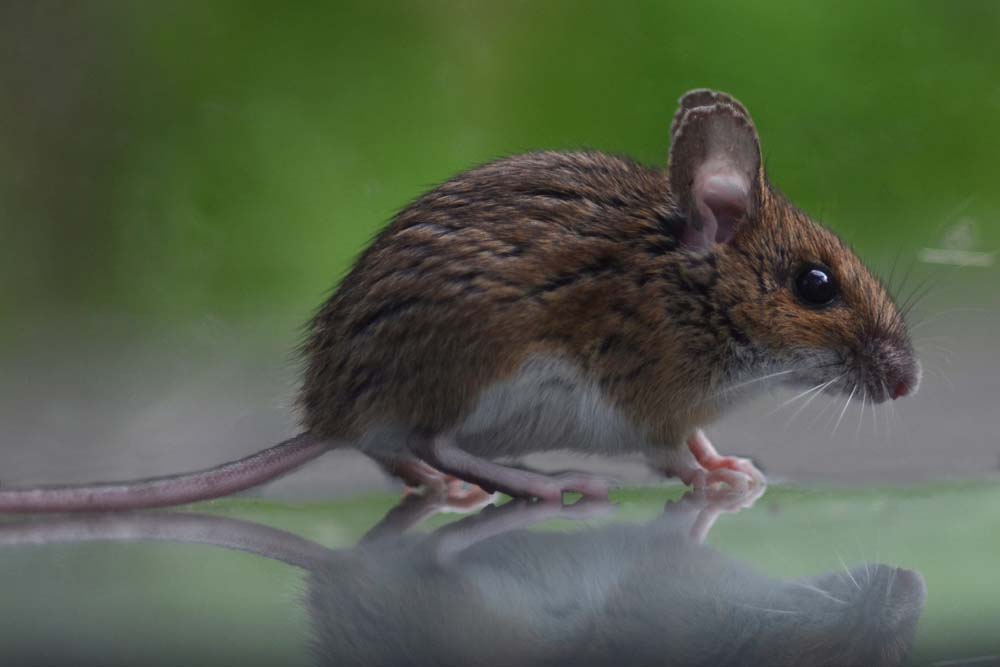
For the first time on this trip, I am lucky with my traps: Yellow-necked Mouse (Apodemus flavicollis) – Gelbhalsmaus
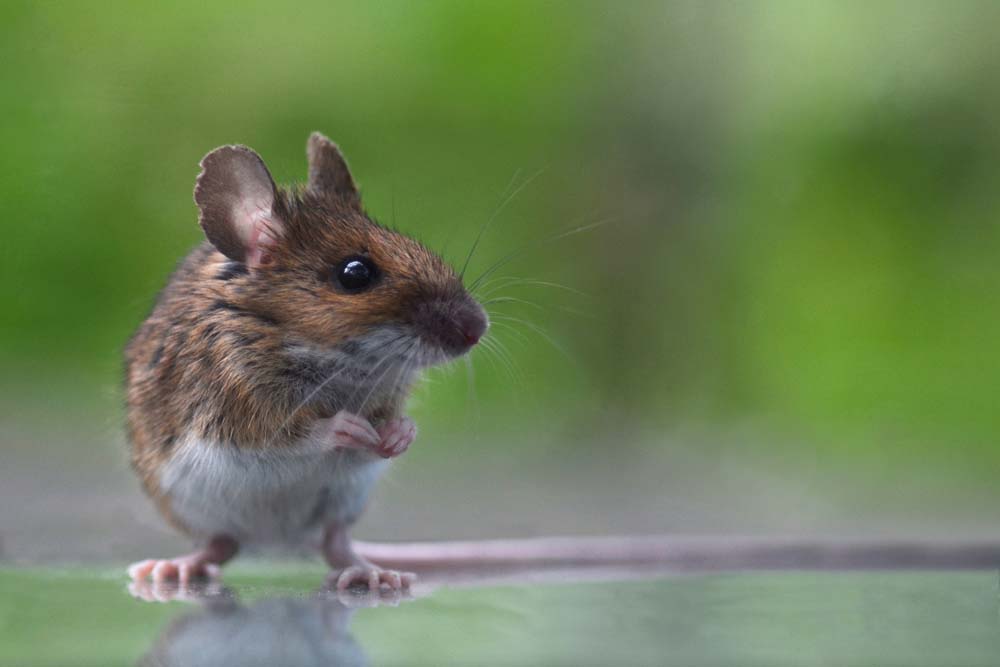
The underparts in the Yellow-necked Mouse are white and there is a sharp demarcation line between above and below.
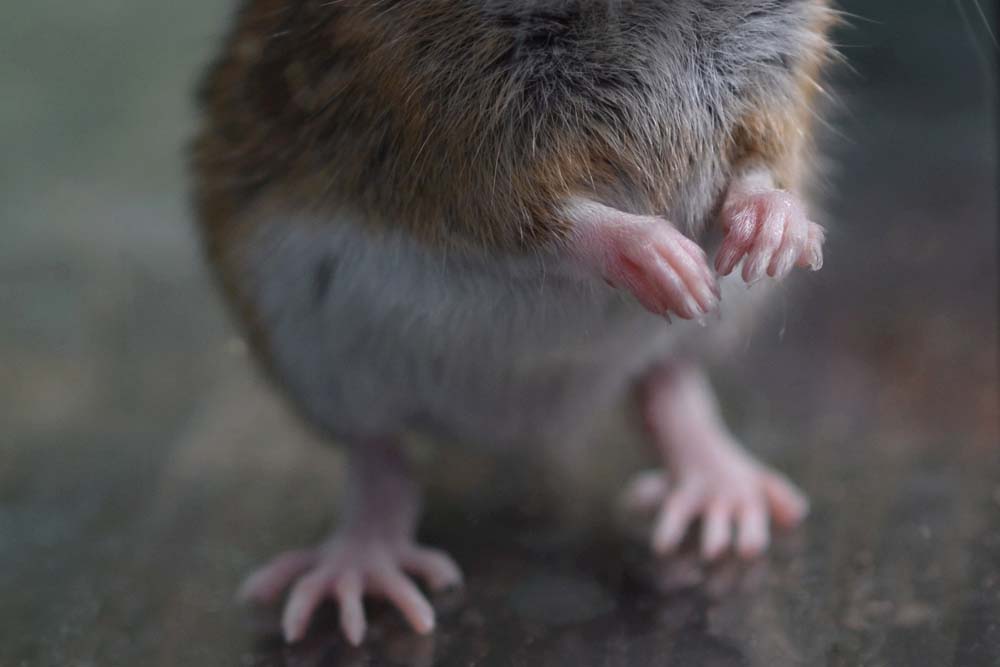
This mouse gets its common name from the ochre-coloured patch of fur between its forelegs, but this is often inconspicuous – like in this specimen.
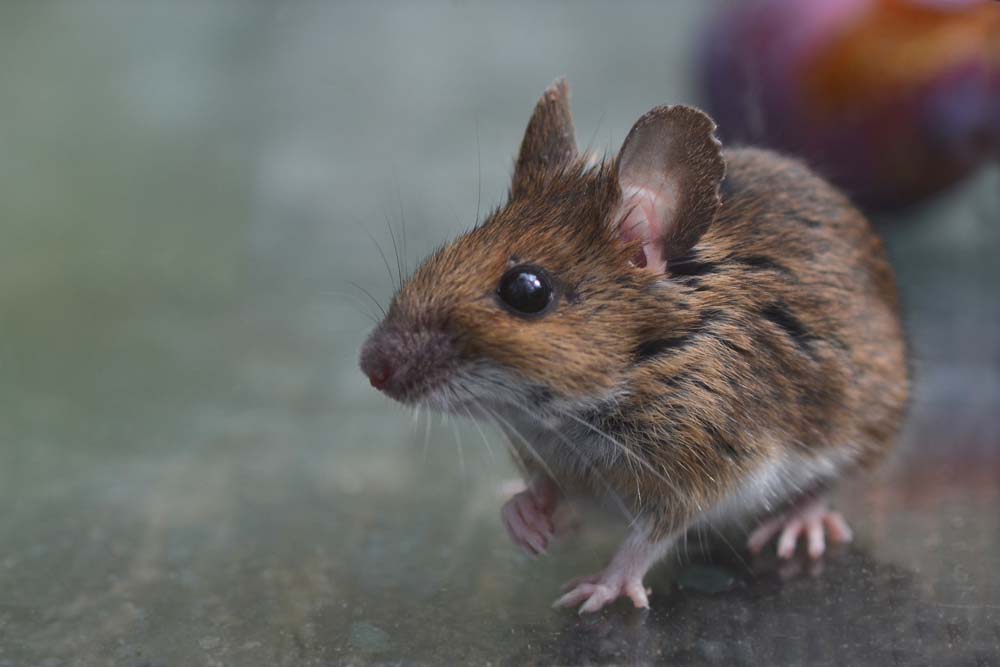
The Yellow-necked Mouse is closely related to the Wood Mouse, with which it was long confused. It differs in its band of yellow fur around the neck and in having slightly larger ears and usually being slightly larger overall.
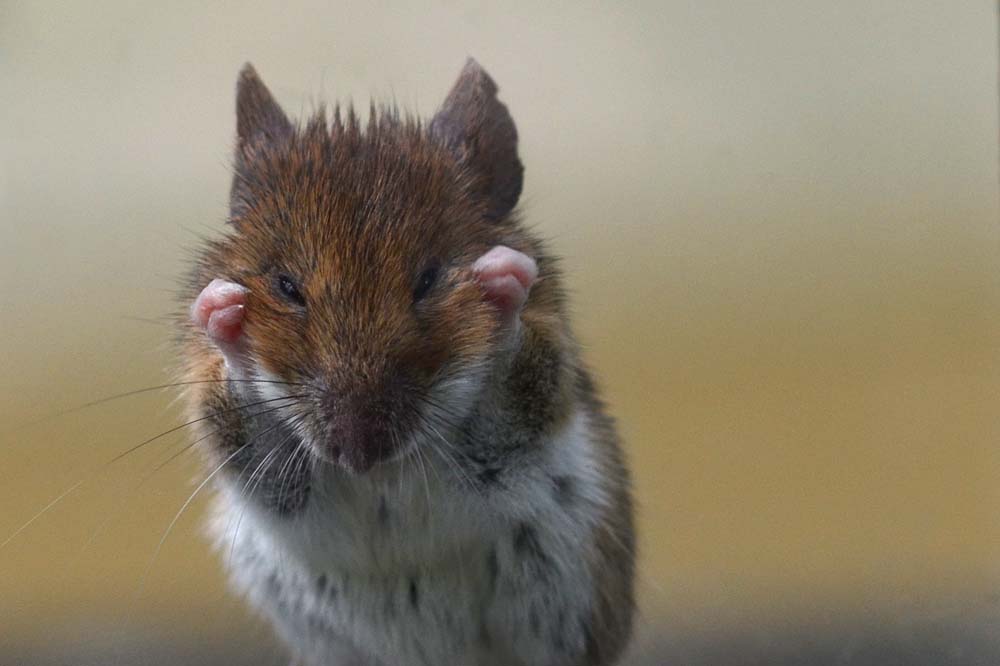
The Yellow-necked Mouse is preyed on by owls, foxes, weasels … and caught by curious mammal watchers …
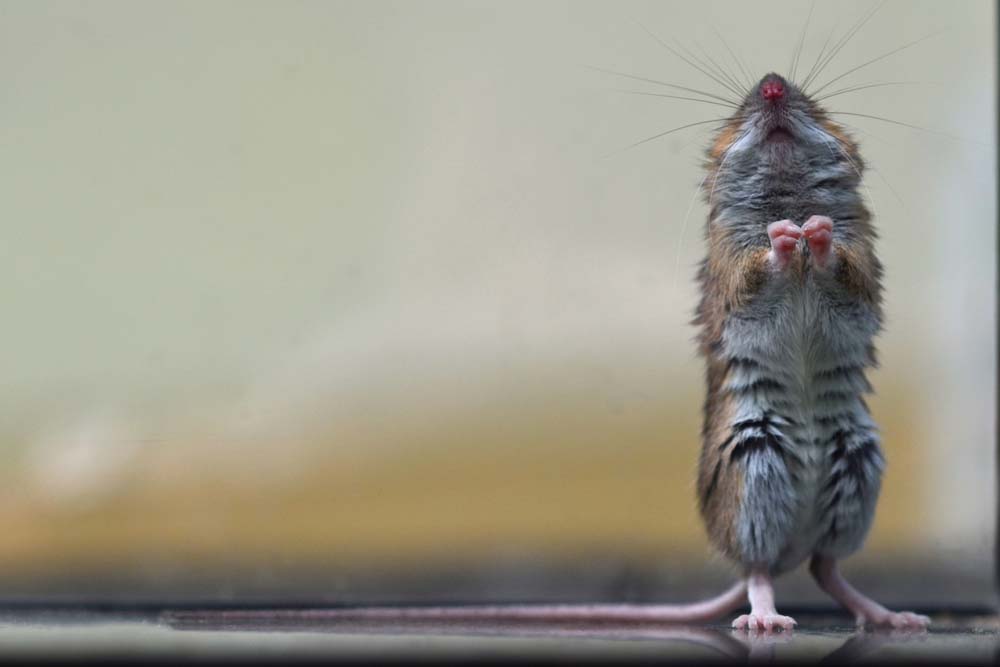
This one was lucky to be released after some minutes of closer inspection in my „mammal-watching-travel-aquarium.“
During the day we hike to Češka koča, a well known mountain hut in the area. While we enjoy the hike overall, we are shocked as we experience Slowenian forestry practices. Parts of the lower hiking path are transformed into logging trails with the typical trash littering the sides of the route. In one section the trail disembogues into a forest road that could be also described as a forest highway – looking at its dimensions. I am sure it pays to the logging companies to send their hugest logging trucks all the way up into the steepest slopes. But a price they also should pay for, is the damage in tourism. You only have to experience a totally unmotivated, frustrated 11-year old (my daughter) in this destroyed environment to understand that forestry and tourism do no longer coexist here.
At least: The subalpine and alpine areas are fantastic. Behind Češka koča I can take photos of a chamois. According to the mountain-lodge keeper Ibex do occasionally occur here too, but for both species the more southerly exposed slopes of the Karavanks supposedly provide better habitat with higher numbers.
Monday, September 4th
I am invited by LIFE DINALP BEAR, a project that aims to improve the coexistence of bears and men in Slovenia, Croatia, Austria and Italy. I travel the following three days with them and visit places and projects that have been labeled „bear-friendly“.
In Ribnica we visit beekeeper Bostjan Kojek who got the bear-friendly label for protecting his bees with an electric fence and for accepting that he has to controll his beehives more often because of the bears in the area.
In the afternoon we arrive in Kočevje, the „bear capital of Europe“. Katja Konečnik, head of the Slovenian Forest Service for Kočevje, tells us that this area in southern Slovenia has the highest density of bears in Europe. Bear hunting has a very long tradition in Slovenia, for the first time they now offer bear watching too.
The bear watching project is still in the early stages of development, which explains why visitors have to accept the current framework conditions – which are: 1. As a bear watcher you are accompanied by a hunter, who certainly is a knowledgeable wildlife specialist, but who is for many animal lovers maybe not first choice in terms of company; 2. They use the raised hides of hunters instead of low level hides, that are convenient for wildlife photography; 3. You are not allowed to take pictures at all, since the clicking cameras could frighten the bears.
But we are promised that the plan for the nearby future is to improve this situation. Bear hunting and bear watching will be split. Therefore it is important to get the process going. It is probably standing to reason that the more bear watchers come now, the faster the situation improves. Furthermore LIFE DINALP BEAR has prepared Guidlines for Responsible Practices.
I end up with Jana and Rudi – Rudi, the hunter – on the way to one of the raised hides. While walking from the car to the tree stand, I see 4 Red Deer and we hear Wild Boar all around us. I watch 60-year-old Rudi climbing up the ladder. I count 22 rungs. Having years of experience as a rock climber, I don’t mind going up, but I know many people who wouldn’t dare to climb up nine vertical meters without a chance to secure themselves.
Rudi, who speaks german, doesn’t speak much. Of course we are not supposed to speak anyway. And Rudi wears headphones with sound amplifiers, which help him to hear approaching animals. The first animals to arrive are not really difficult to hear coming. 19 Wild Boar appear on the scene, busy feeding on corn that is strewn among the many small chunks of limestone. Later this first group is replaced by 4 other ones. The last ravens fly over; the last blackbirds scold before they roost; a lonely bat appears. The boar’s flipping over stones sounds almost like the burbling of water – and feels a bit slumbrous. Jana is incredibly quiet. Is she asleep?
Just then Rudi says: „Bär, jetzt auf Tisch.“ A look through the binoculars shows indeed a bear standing on a table-like platform that was built to grant the bears some peace from the boars, with which they share the same food. I am astonished that I missed the bear coming. Of course Rudi with his headphones had heard him. But I am again surprised that he is apparently able to indicate from where the bear had come. Do these headphones really work that good? Can you really acoustically track a bear’s path on a leafless forest floor? I am glad Rudi’s explanation is much simpler: „Bär kommt immer von rechts.“ He knows this bear. And it is the one that always comes from the right hand side. Never mind! It’s a real Brown Bear. And we are glad to have seen it eventually.
Later at the meeting point the others are quite proud to report, that they have actually seen ten bears. Ten bears! Apparently this is not unusual in Kočevje. And of course it has to be at least partially ascribed to the fact that tons of corn are fed to the animals each year. Weather this is good or not is arguable. For more information on this topic read another chapter in the LIFE DINALP BEAR-paper: An important issue in wildlife tourism: Baiting wildlife
If you want to book a bear watching trip please make an inquiry through Discover Dinarics
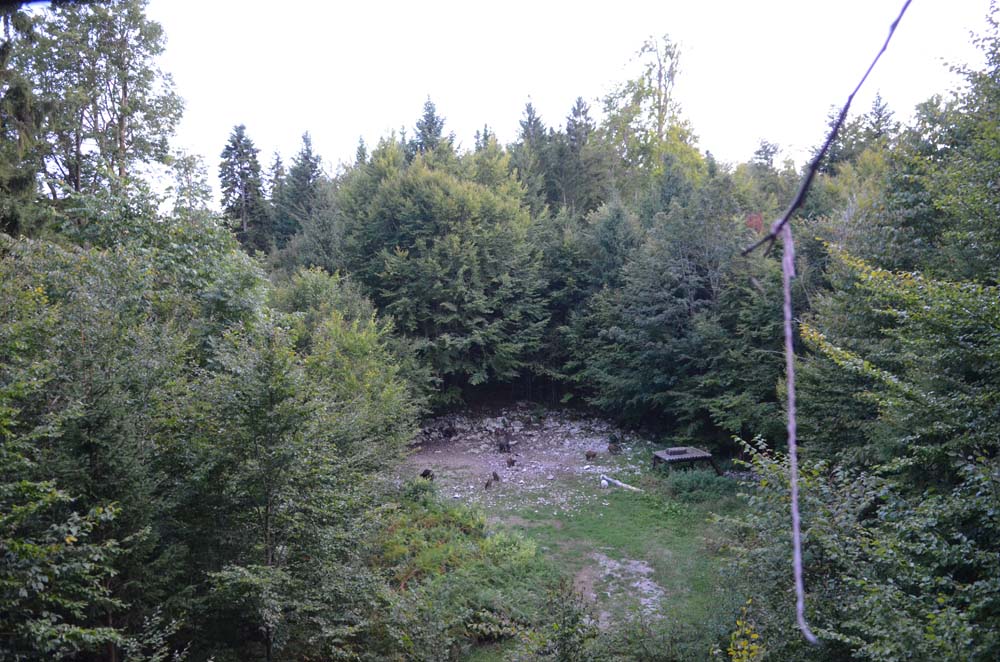
This is the setting: clearing in the forest; a threat to indicate wind direction; lots of corn; Wild Boar already in place
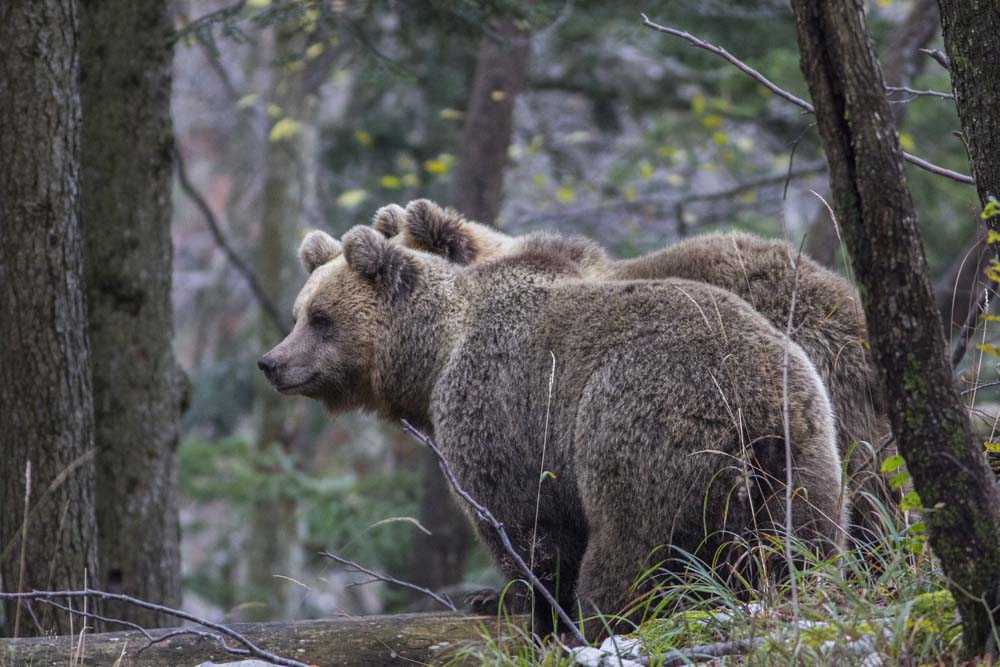
… many Slovenians are pathetic, when it comes to their bears. But many also understand: „There is no coexistence between men and bear in a relatively densely populated country without a regulative mortality“, as one of our hosts puts it formally. Foto: Matej Kovačič, LIFE DINALP BEAR
Tuesday, September 5th
A „Bear trail“ is next on our agenda. The trail leads along the borders of a virgin forest near the village of Rajhenav. Our guide is biologist Petra Draškovič Pelc.
The “Bear trail” does not focus primarily on watching bears, but on experiencing bear habitat and the presence of wild bears in their natural environment. This is done by walking along trails, looking for bear signs (i.e., footprints, scat, etc.) and witnessing bear behaviour (i.e., marking and rubbing on trees).
Petra really is keen-eyed and very knowledgable. In the course of the trail she finds us a freshly opened wasps nest, scratches of an adult and a juvenil bear on a log and a bear scat with pear seeds in it.
After the walk we are welcomed for lunch. While we sit, eat and enjoy another marvellous meal, Mike in our group detects a Beech Marten nearby. On the way back to Kočevje another marten-like animal and a Roe Deer cross the road.
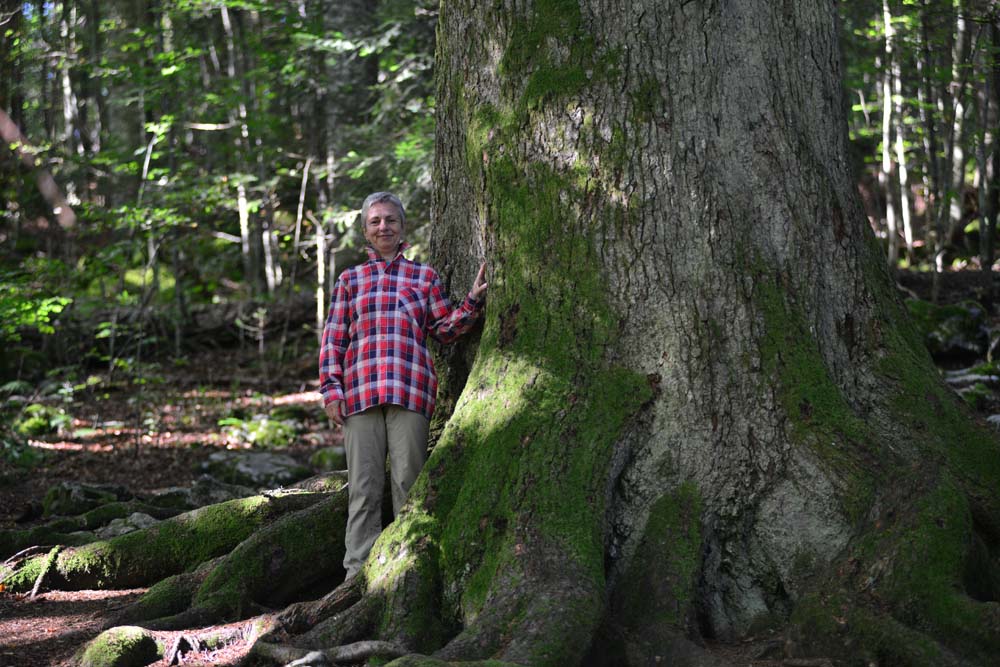
Two „Queens of Rog“ (Kraljica Roga): The right one is a 500 year old silver fir in the woods of Kočevski Rog near Rajhenav.
We cross the border to Croatia and arrive at Risnjak Nationalpark. We stay at Lazac cabin on a large meadow, surrounded by forested mountains. In July a bear with two cubs was observed here crossing the meadow. Wolves are possible too. We all gather on the terrace of our hut and wait what’s next: We hear distant Red Deer bugling, two Roe Deer show up and a Red Fox patrols the area repeatedly.
Wednesday, September 6th
The morning at Lazac hut reveals 5 more Roe Deer and the fox again.
During the day we visit an old mill near the village of Leskova Draga. Here I find the last mammal of the trip: a Lesser Horseshoe Bat.
Final facts and prospects
Slovenia is a great country for mammalwatchers.
It is positioned at the intersection of four major European geographical units: the Alps, the Mediterranean, the Pannonian Basin, and the Dinaric Alps. Or to put in the words of Rok Ciglič and Drago Perko from the Anton Melik Geographical Institute: „Slovenia’s landscape diversity is a feature that counterbalances its smallness.“ For the visitor that means you have to drive only short distances to get to the various environments.
It is a key rule that species richness correlates with area. But in Slovenia habitat diversity seems to outplay area size. Have a look at bats: Even though Germany is 18 times the area size of Slovenia, Germany harbours 25 bat species, Slovenia 27. Great Britain has 18.
For bigger mammals you can expect typical Central-European species, including the three large predators wolf, lynx and bear. Slovenian bears are easy to observe. They will soon become a key species for mammal watchers in Europe – that I am sure of.
Slovenian bears do prosper, because it is socially accepted that Slovenian hunters manage bears. And hunters in Slovenia, who are organized in „hunting families“ do want bears, because its a source of income.
With wolves and lynx it is different. Even though Slovenian hunters support wolf conservation and they are partners in the lynx reinforcement project (LIFE LYNX), many hunters still see wolf and lynx as competitors. Also sheep breeders have most negative attitudes towards wolves. Therefore numbers of both species are still low and mammal watchers can’t expect much.
But attitudes can change as we have experienced on this trip. Bears are welcome in Slovenia. Bear-Watchers are now welcome in the country too. Enjoy!
Mammal list (combined) – 15 species
- European Roe Deer (Capreolus capreolus) – Reh
- Eurasian Red Squirrel (Sciurus vulgaris) – Eichhörnchen
- European Badger (Meles meles) – Dachs
- European Hare (Lepus europaeus) – Feldhase
- Edible Dormouse (Glis glis) – Siebenschläfer
- Mediterranean Horseshoe Bat (Rhinolophus euryale) – Mittelmeer-Hufeisennase
- Red Fox (Vulpes vulpes) – Fuchs
- Coypu (Myocastor coypus) – Nutria
- Red Deer (Cervus elaphus) – Rothirsch
- Yellow-necked Mouse (Apodemus flavicollis) – Gelbhalsmaus
- Alpine Chamois (Rupicapra r. rupicapra) – Alpengämse
- Wild Boar (Sus scrofa) – Wildschwein
- Brown Bear (Ursus arctos) – Braubär
- Beech Marten (Martes foina) – Steinmarder
- Lesser Horseshoe Bat (Rhinolophus hipposideros) – Kleine Hufeisennase
References
- Guidelines for responsible bear watching: http://dinalpbear.eu/wp-content/uploads/Odgovorno-opazovanje-medvedov-v-severnih-Dinaridih_EN_web.pdf
- SLOVENIA IN GEOGRAPHICAL TYPIFICATIONS AND REGIONALIZATIONS OF EUROPE: http://zgs.zrc-sazu.si/Portals/8/Geografski_vestnik/vestnik-84-1-ciglic-perko.pdf
- Spacio-Temporal Distribution and Tourist Impact on Airborne Bacteria in a Cave (Škocjan Caves, Slovenia): www.mdpi.com/1424-2818/9/3/28/pdf
- Environmental correlates of species richness of European bats: http://www.keib.umk.pl/wp-content/uploads/2013/02/ActaCh.pdf
- Ecosystem Services Evalution in the Škocjan caves Regional Park: www.park-skocjanske-jame.si/si/file/download/48…/Ecosystem_Services_Evaluation.pdf
Some Slovenian birds
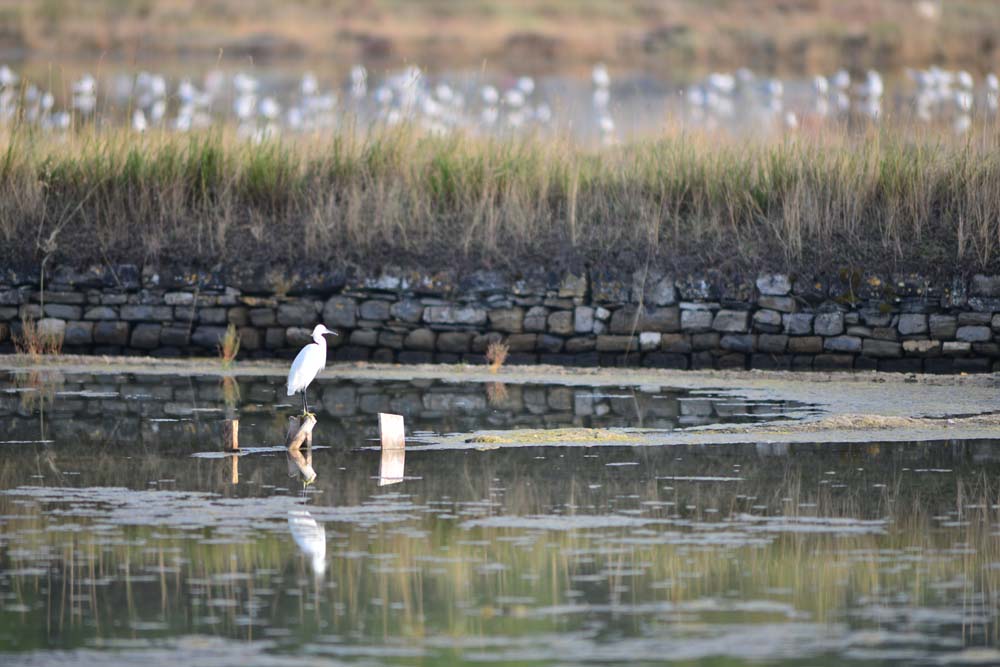
Little Egret (Egretta garzetta) – Seidenreiher, Strunjan

